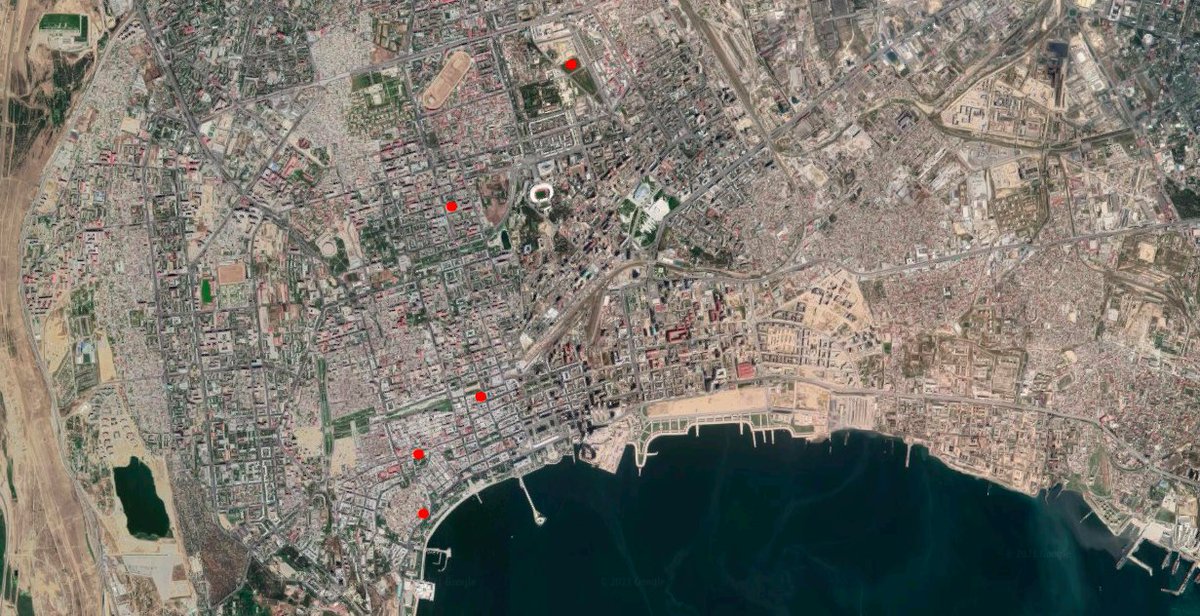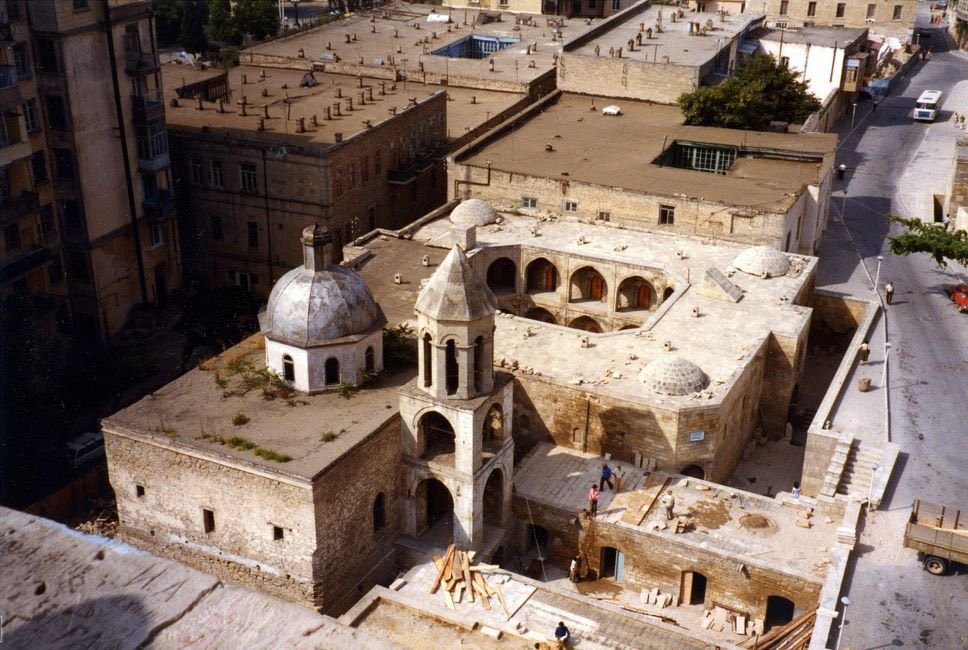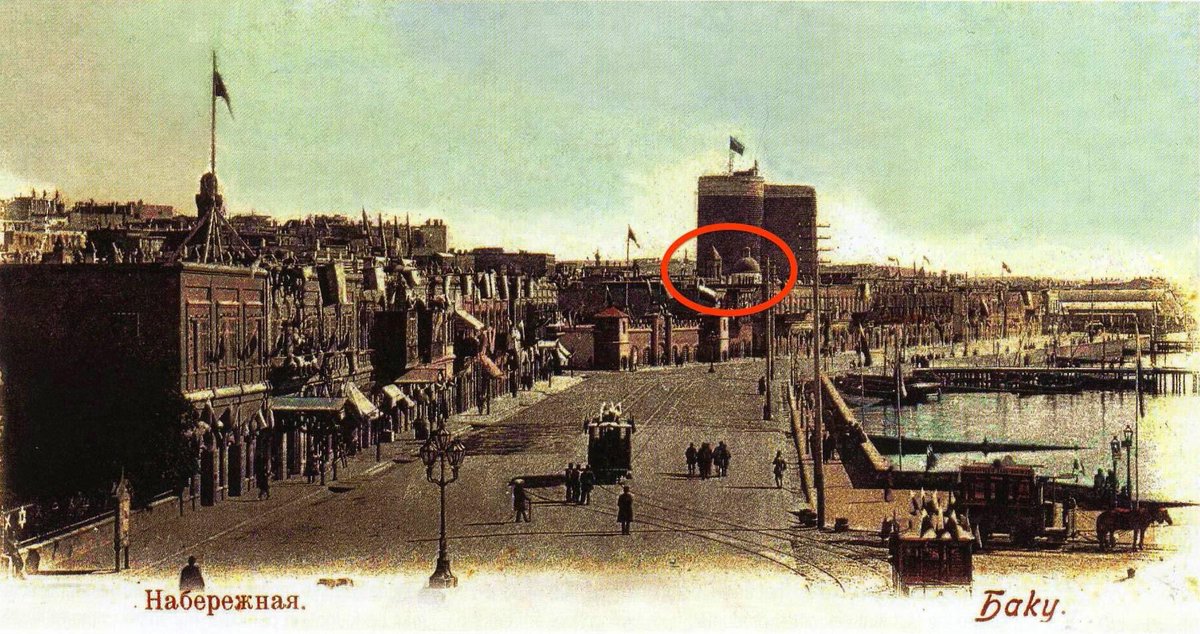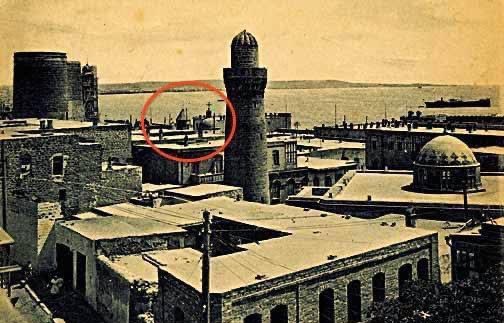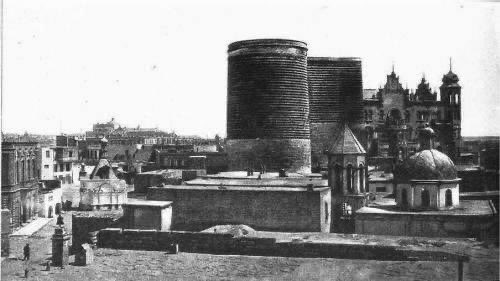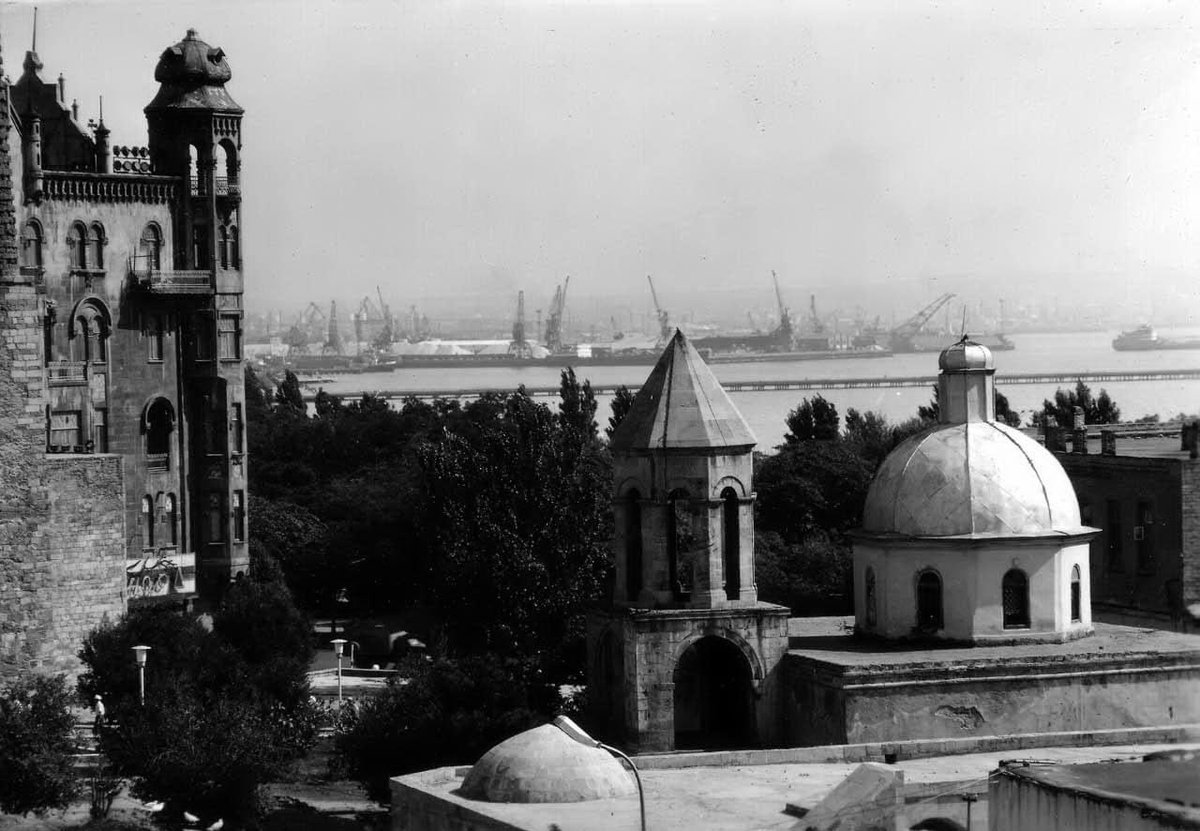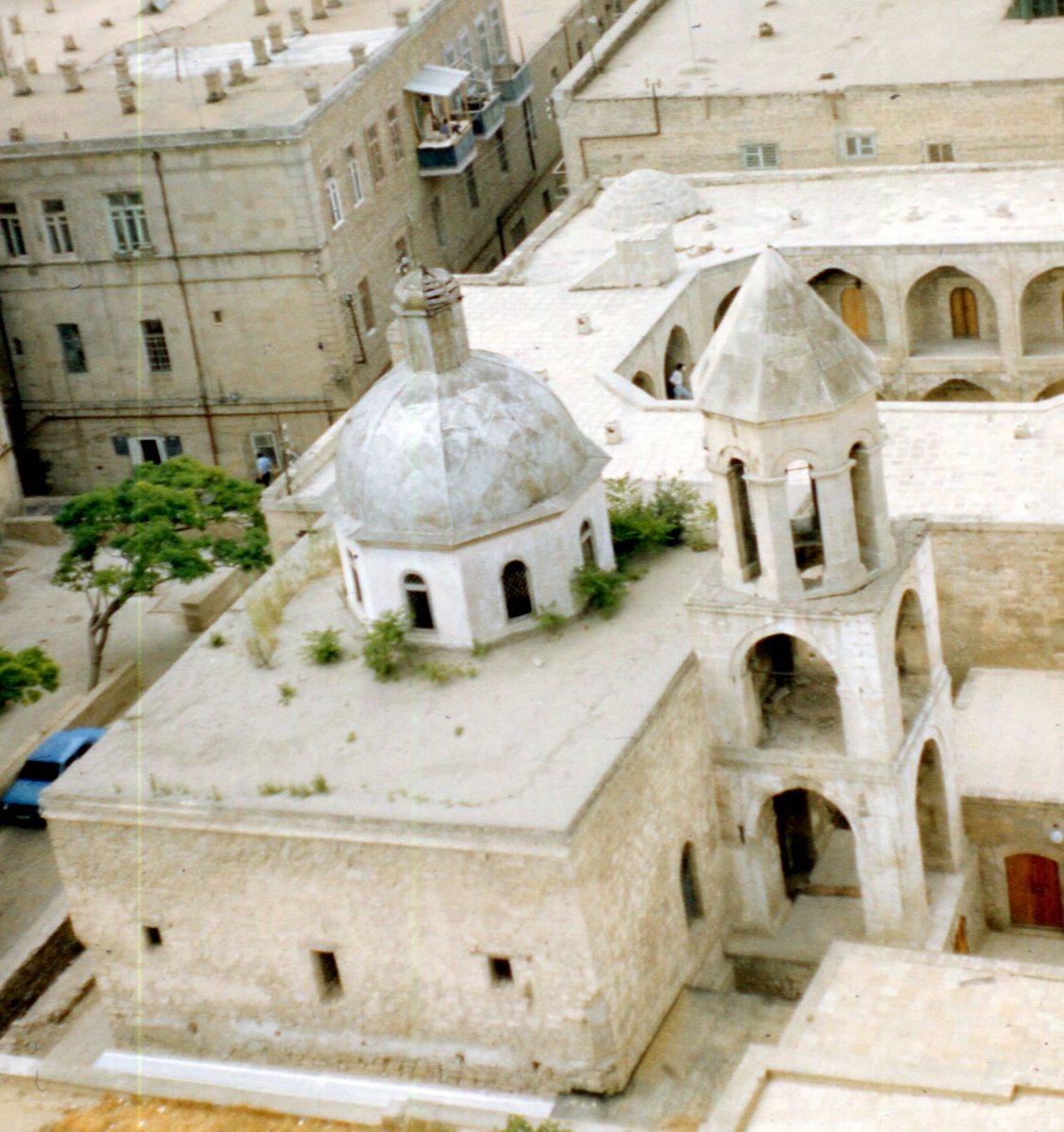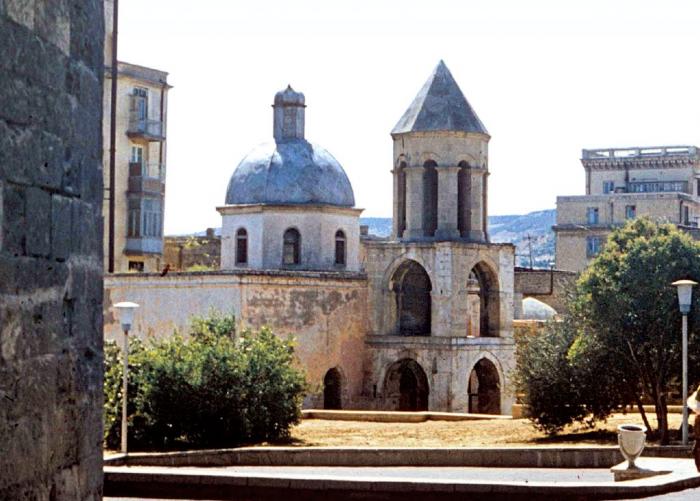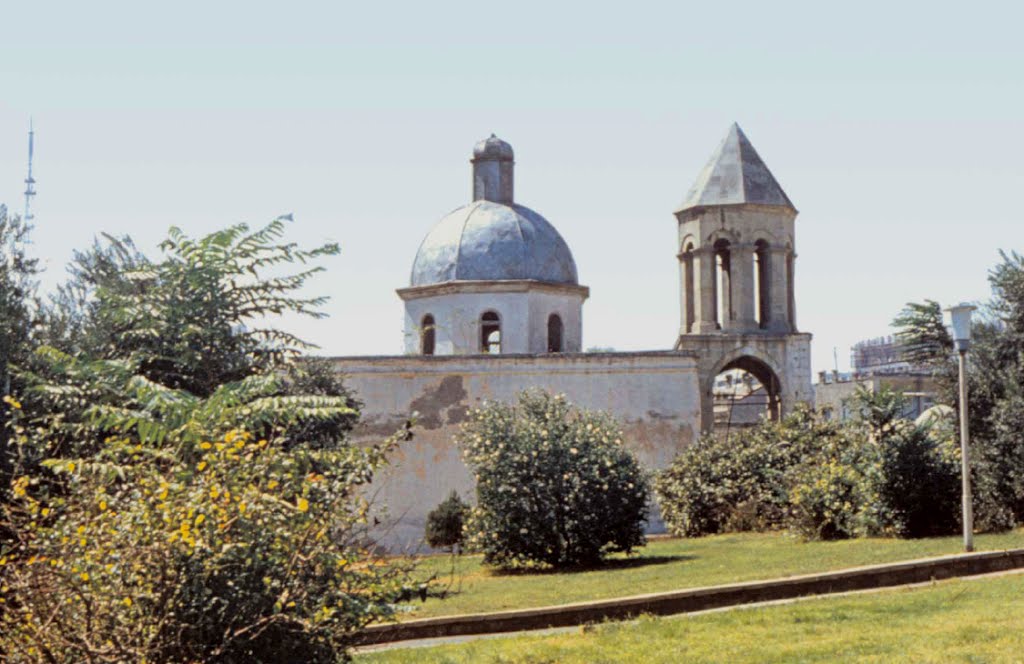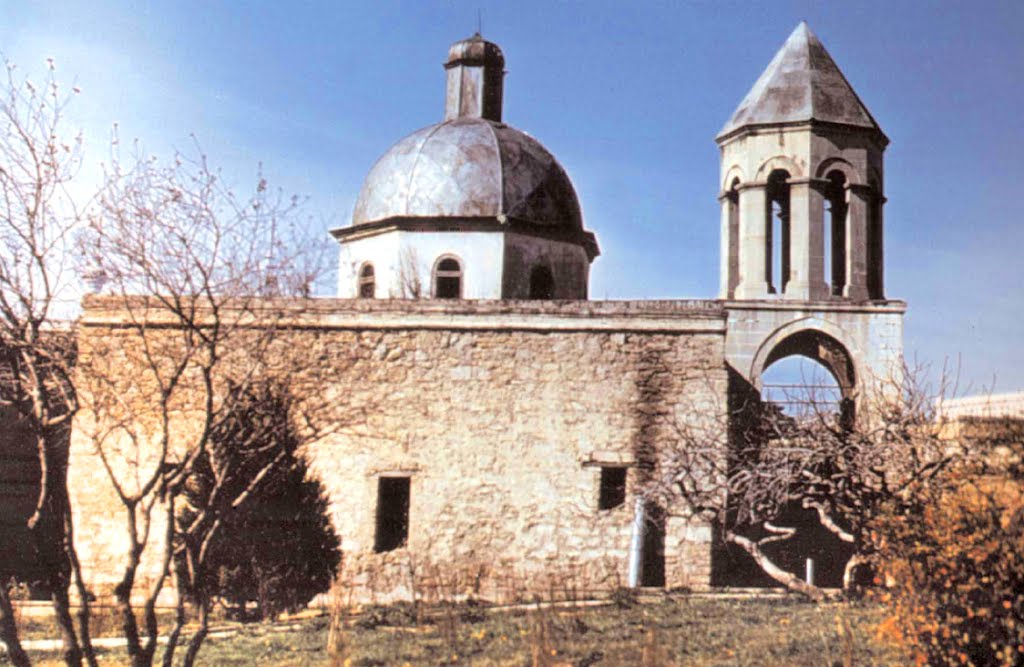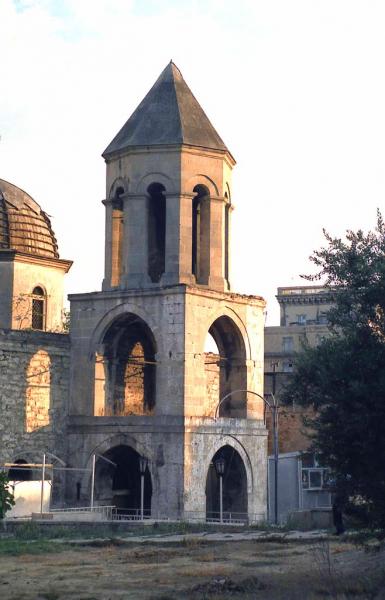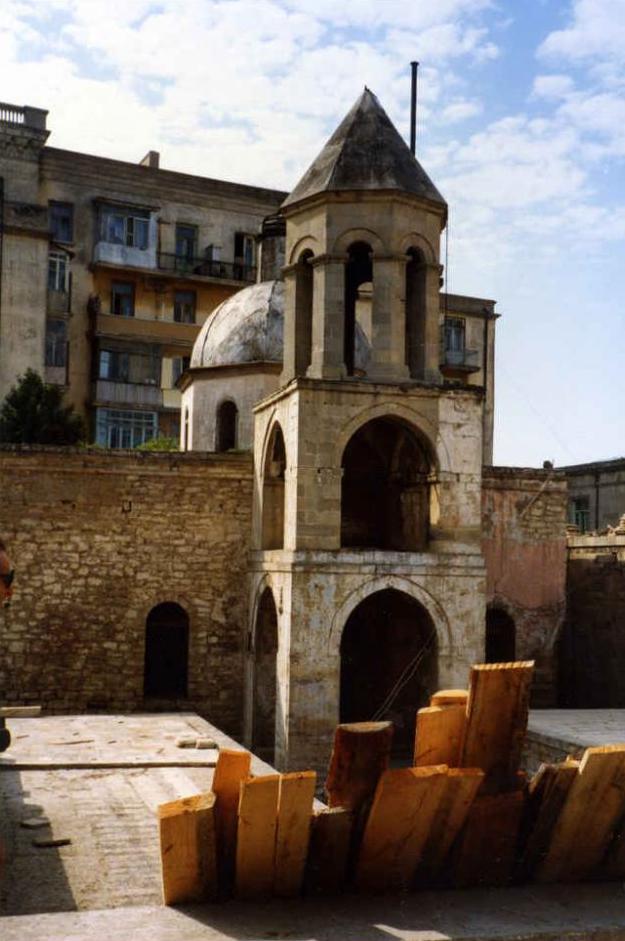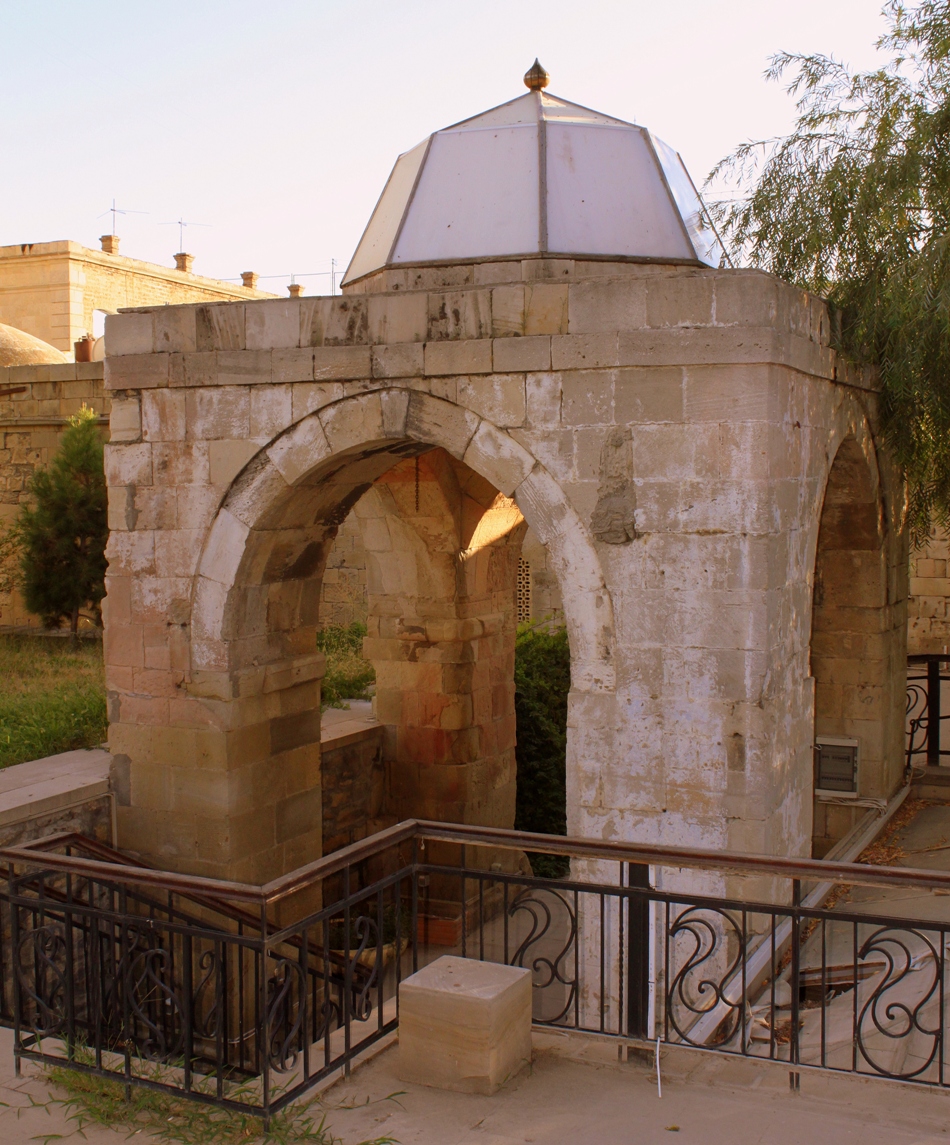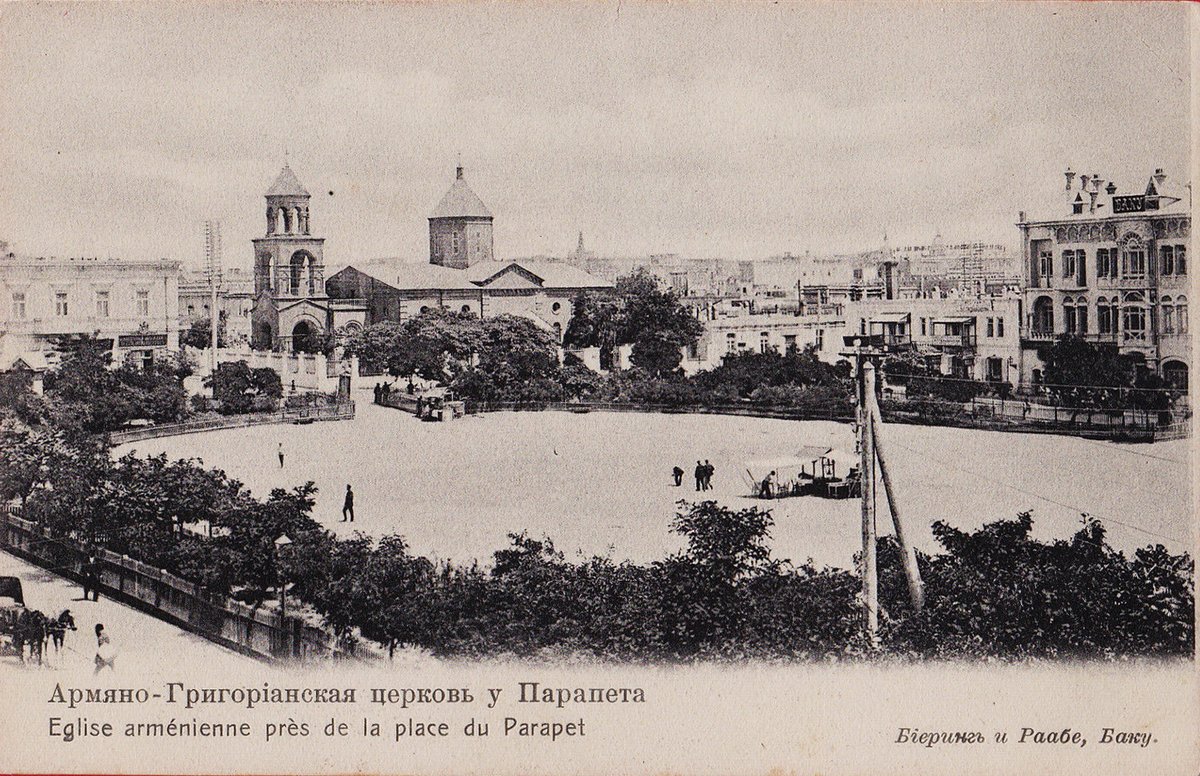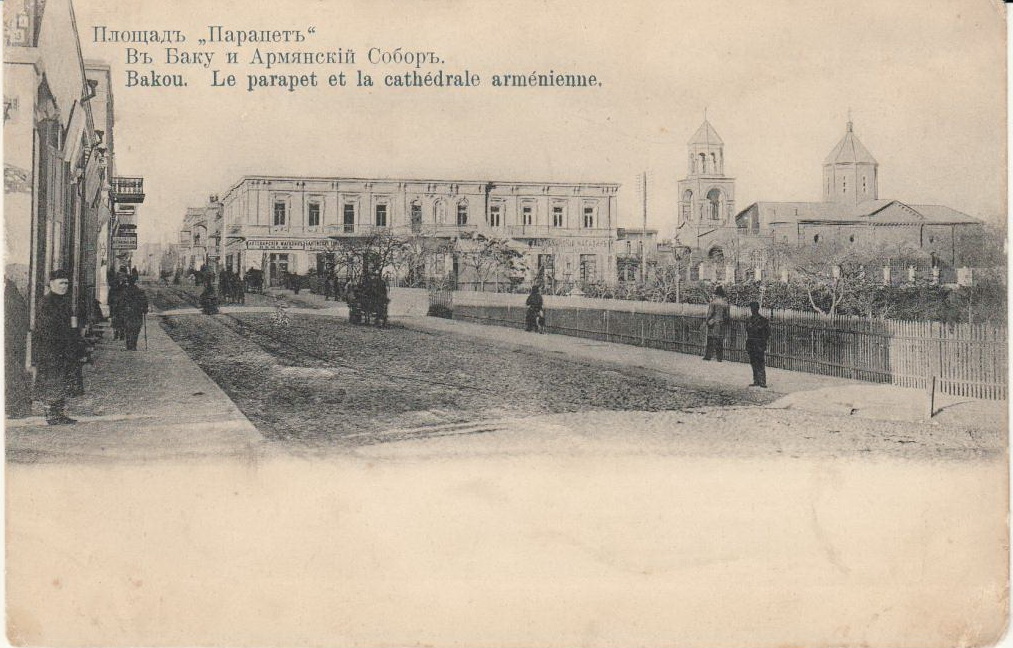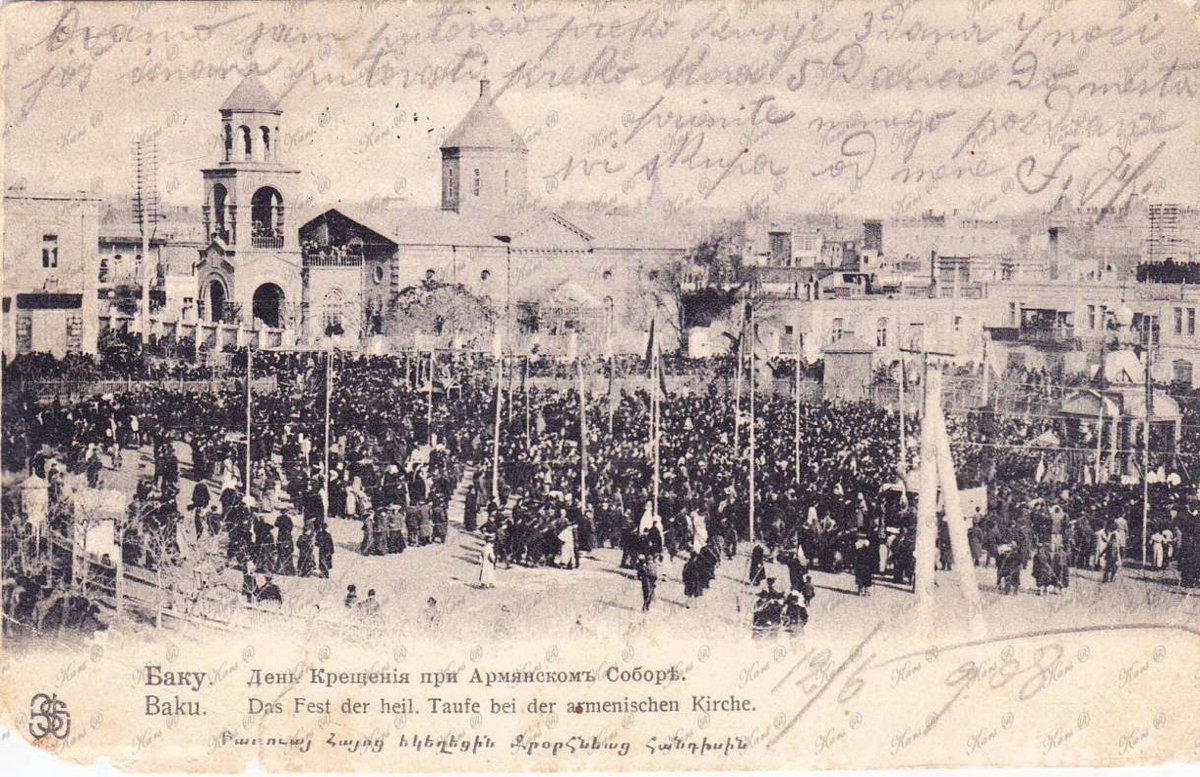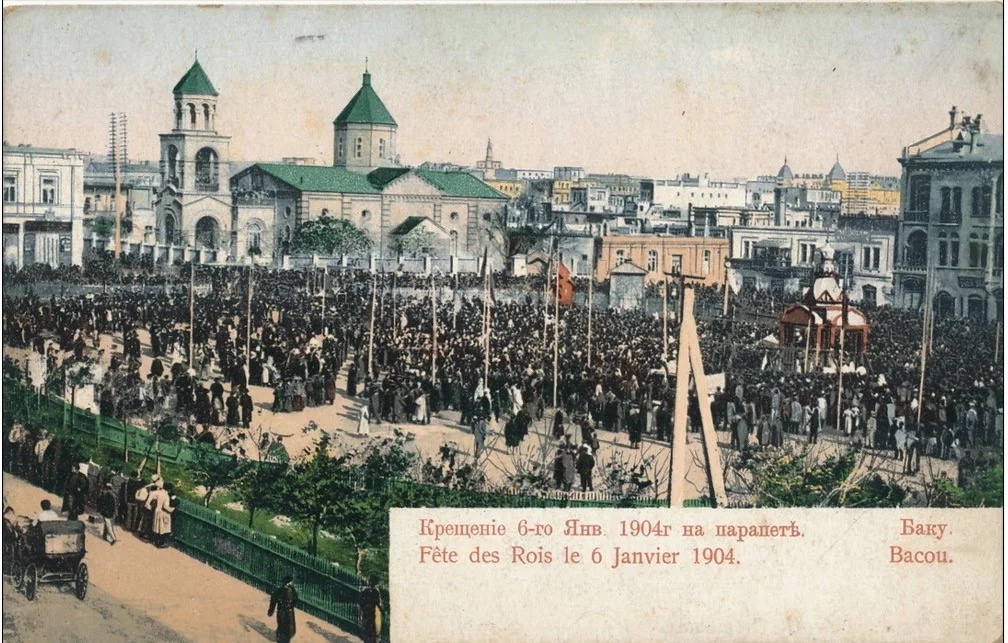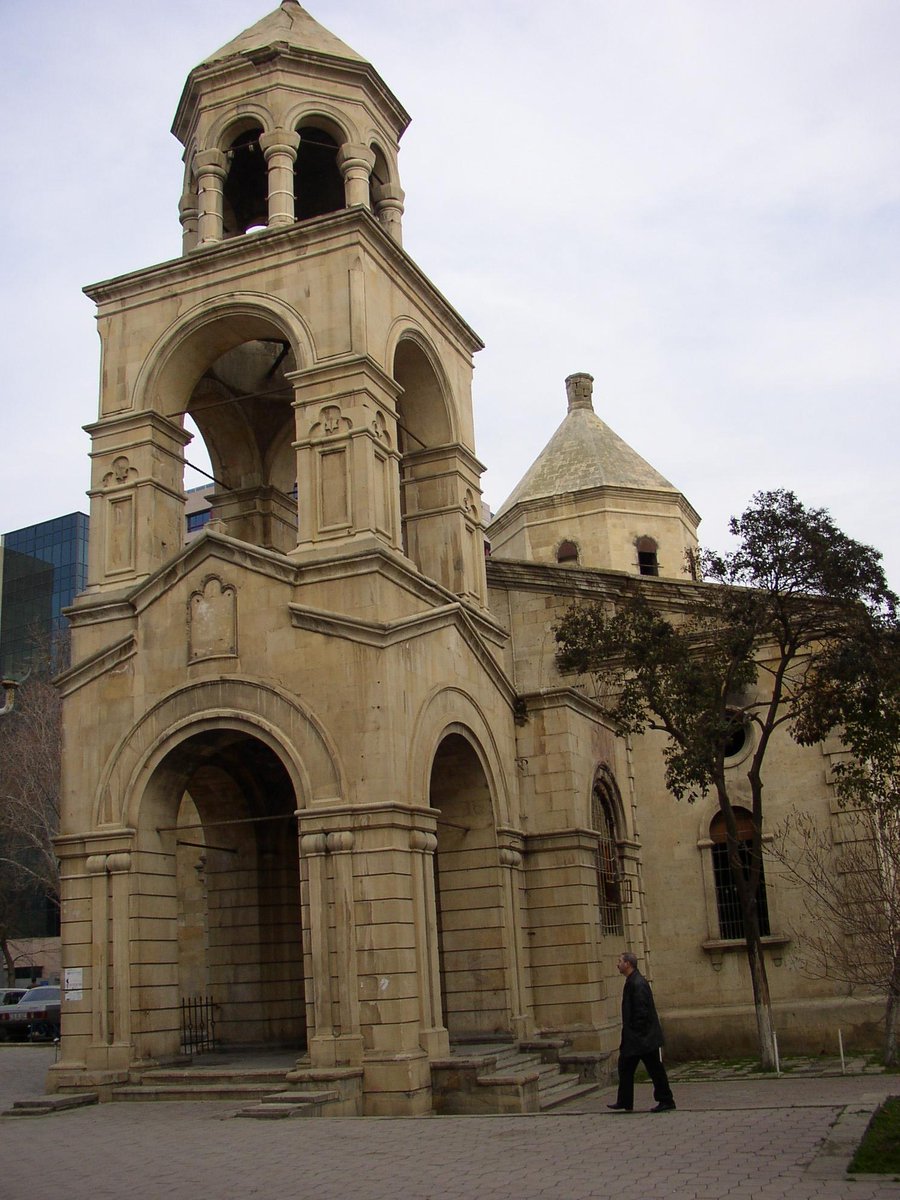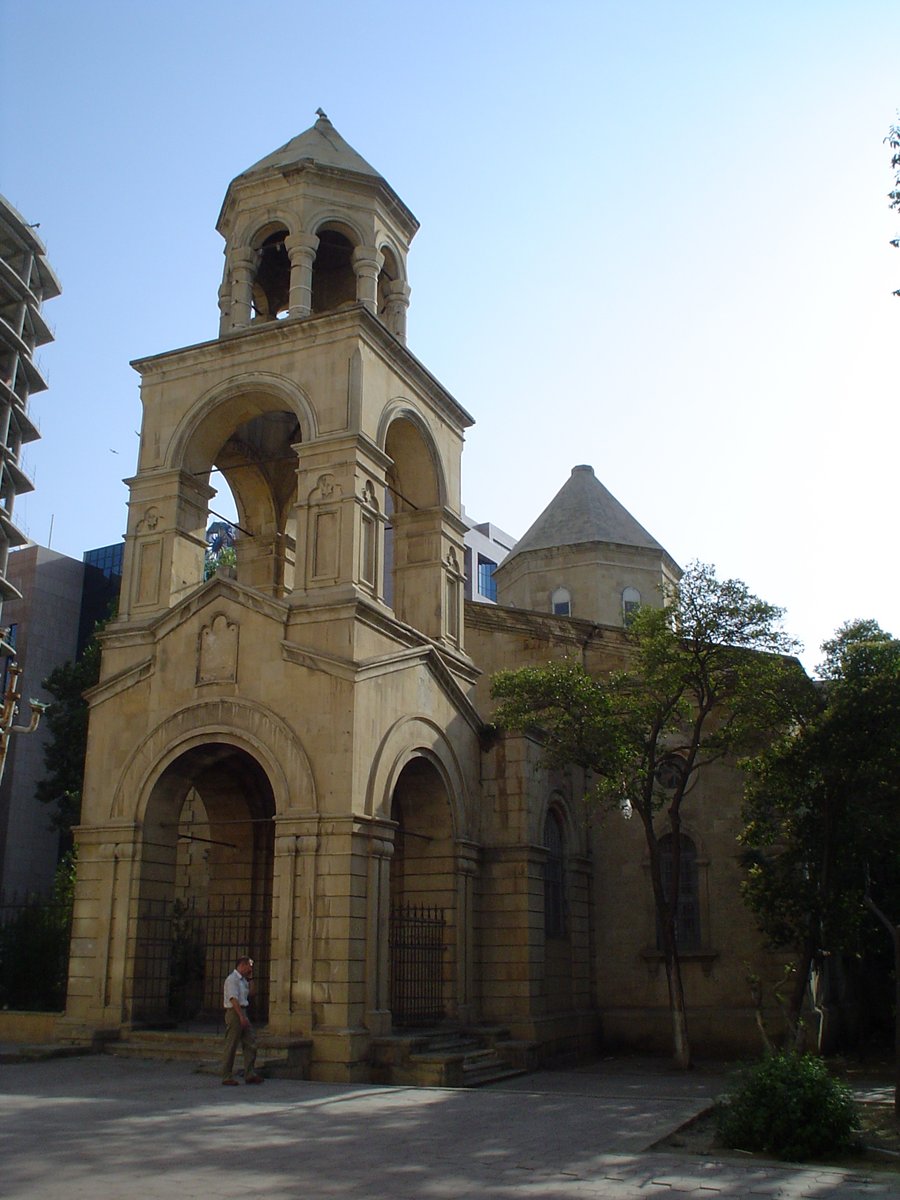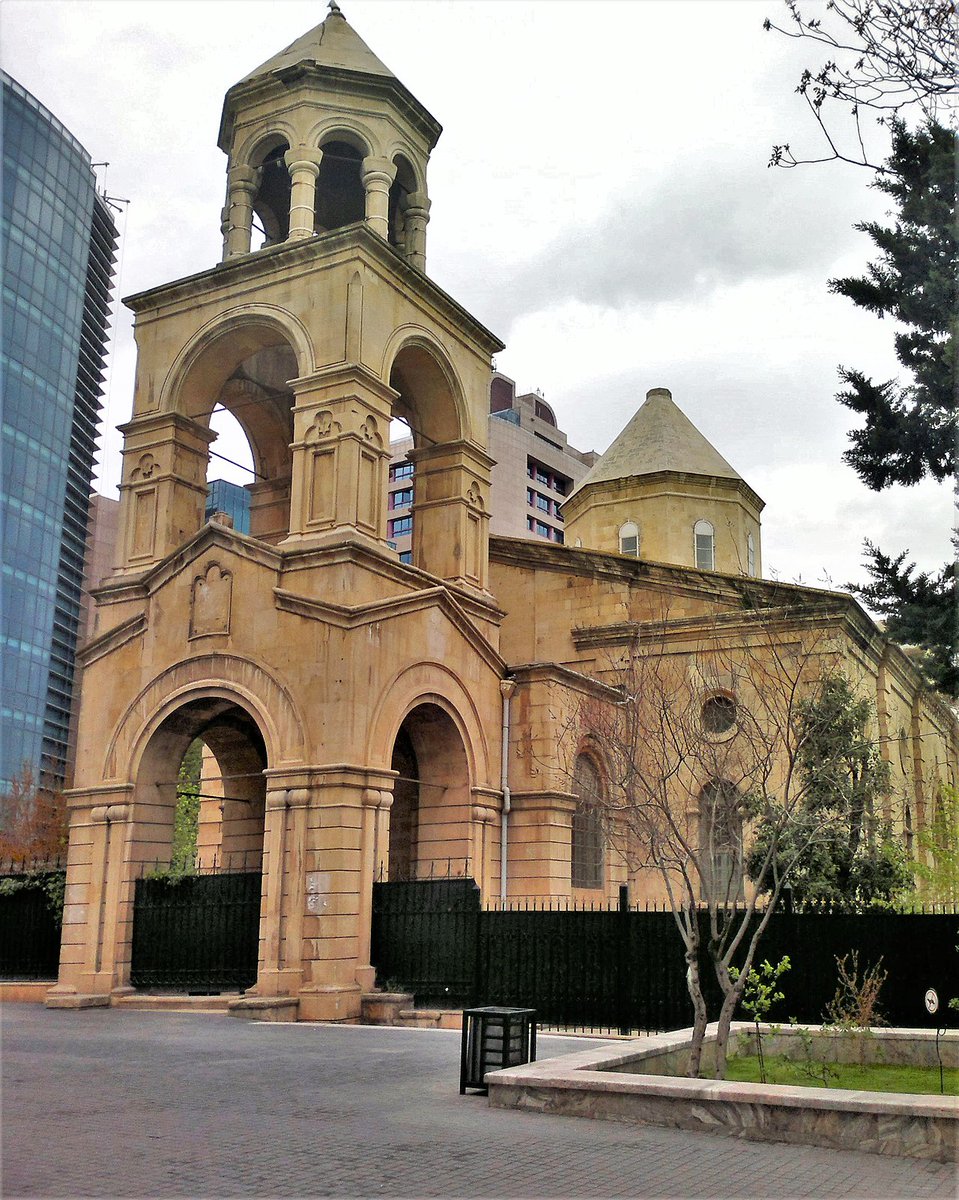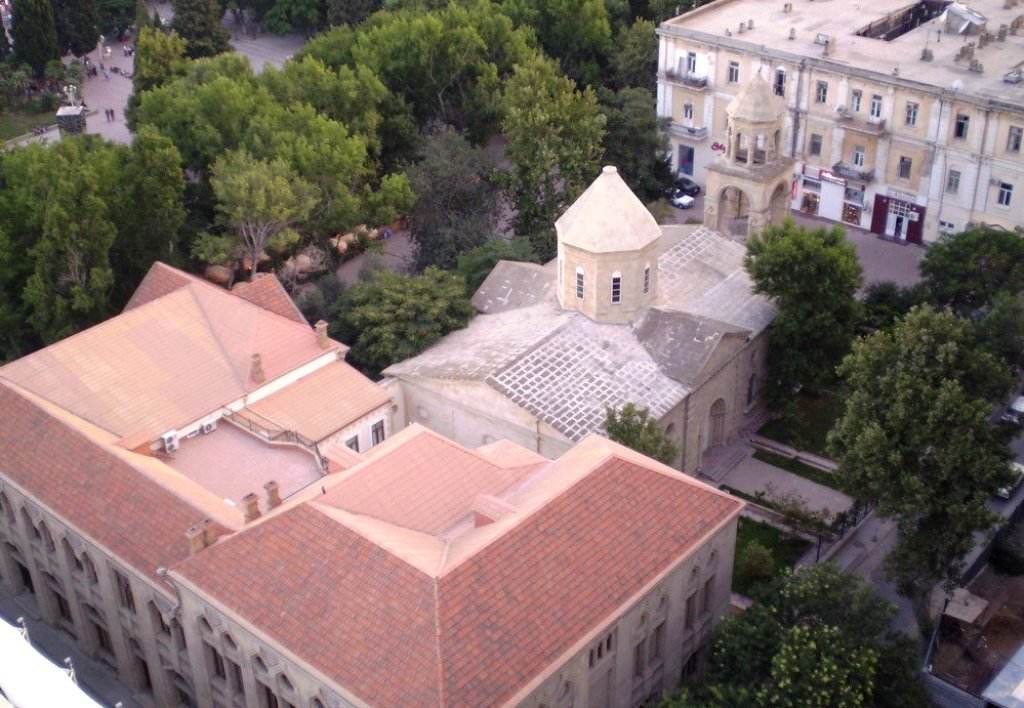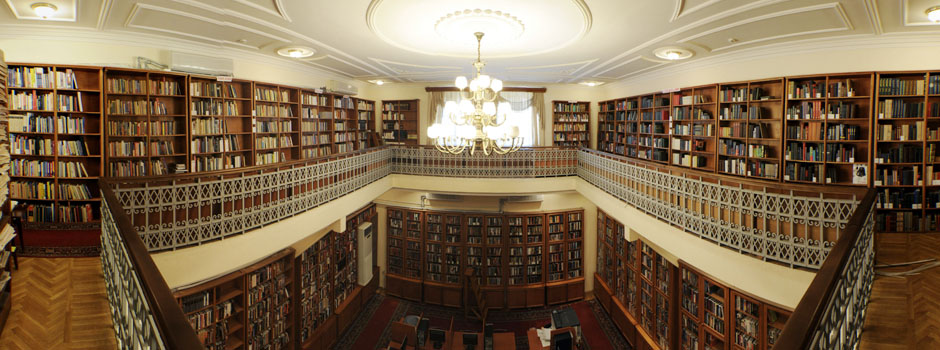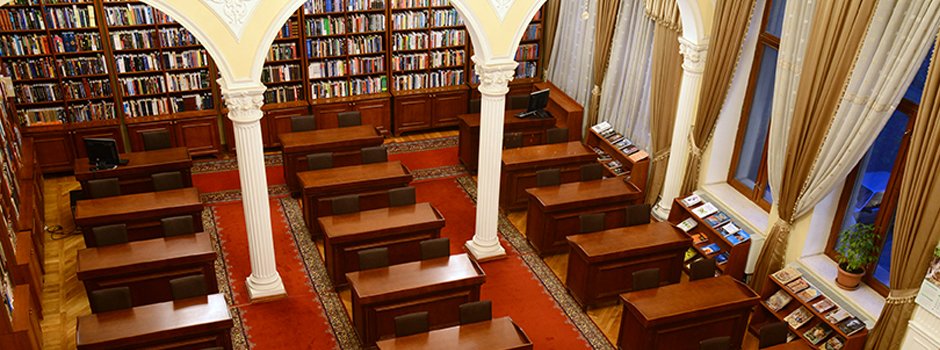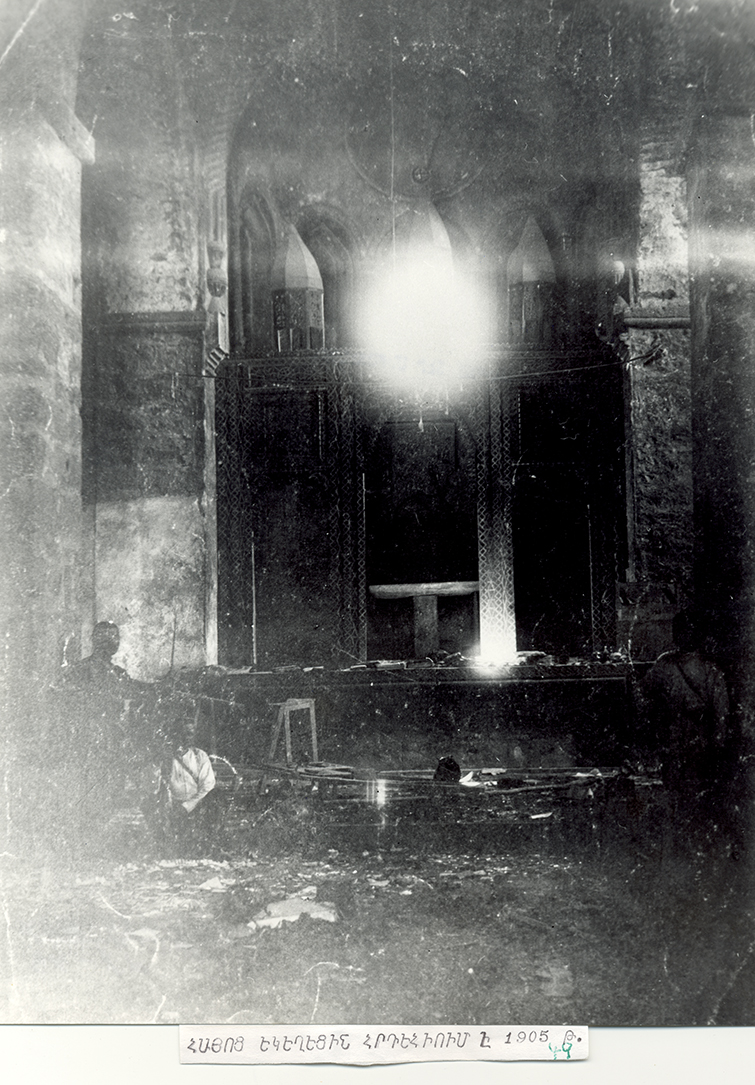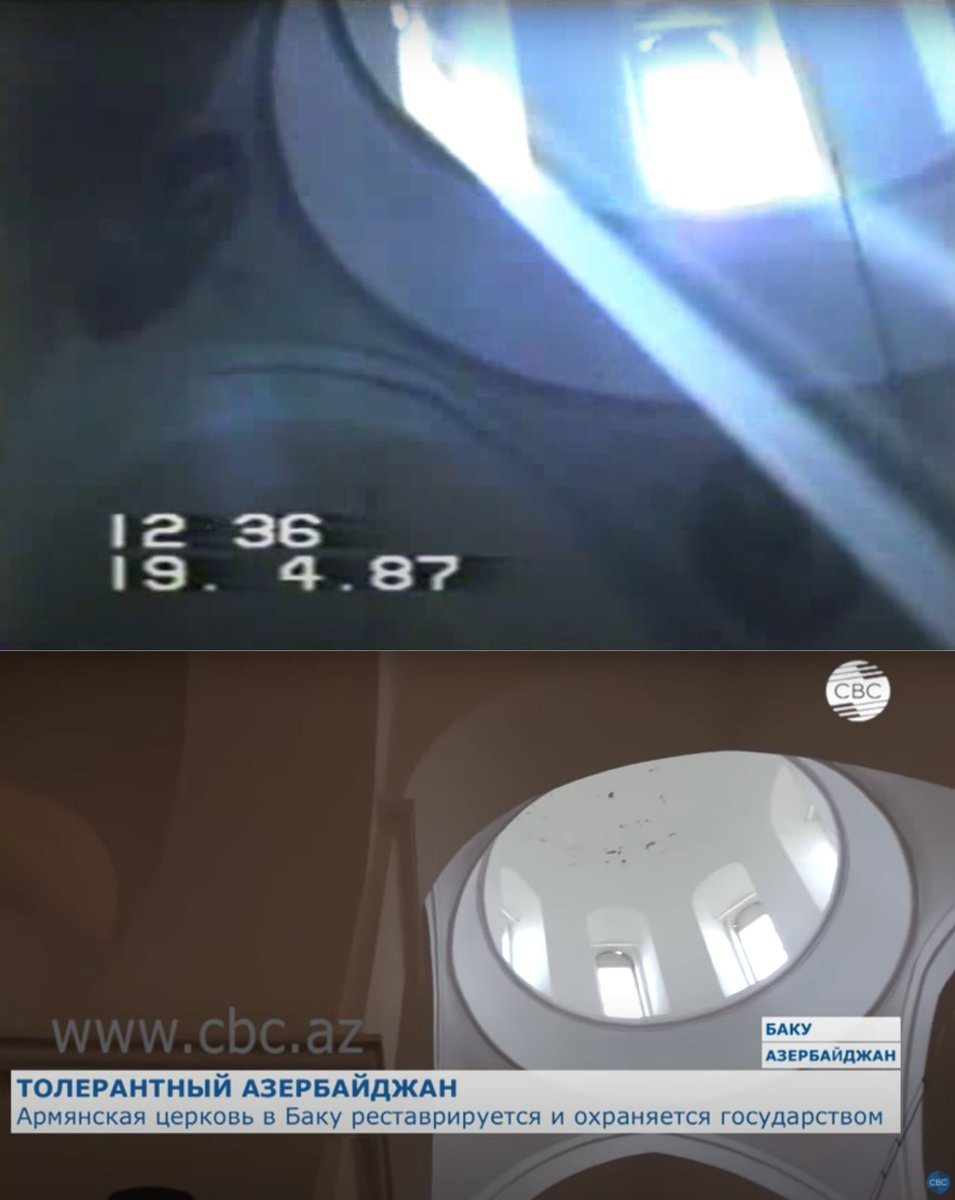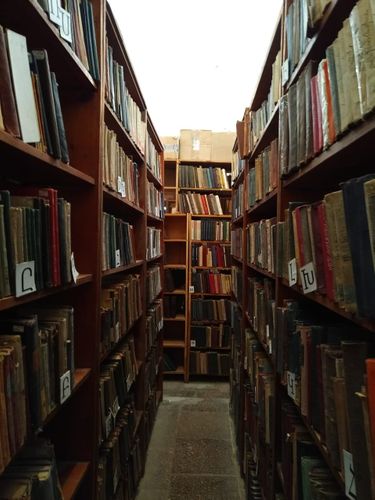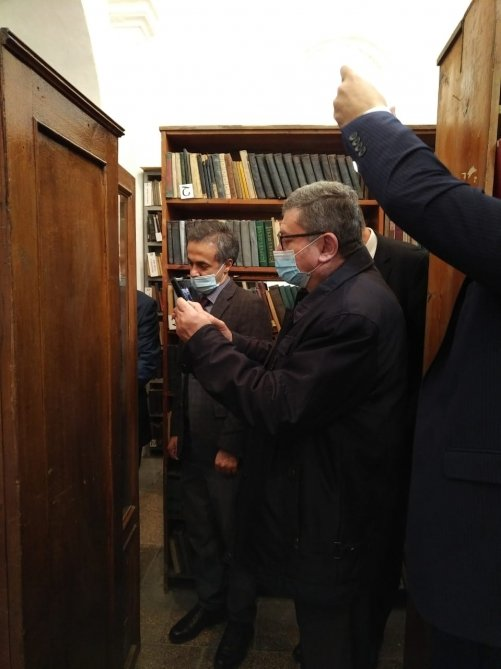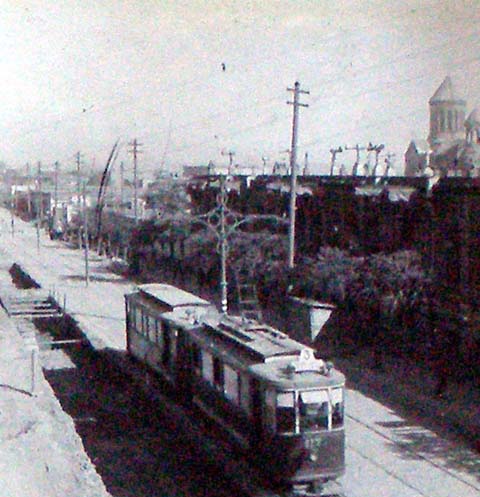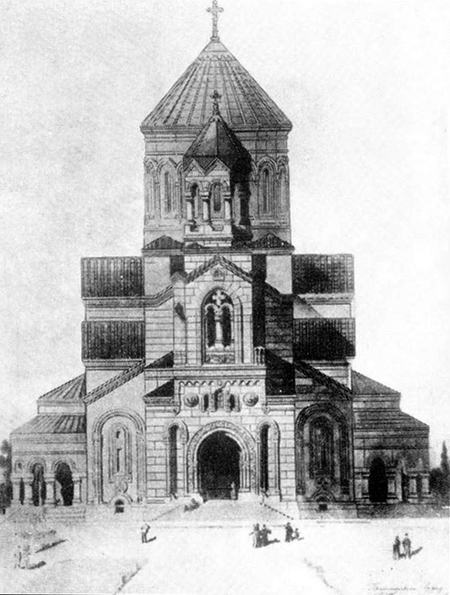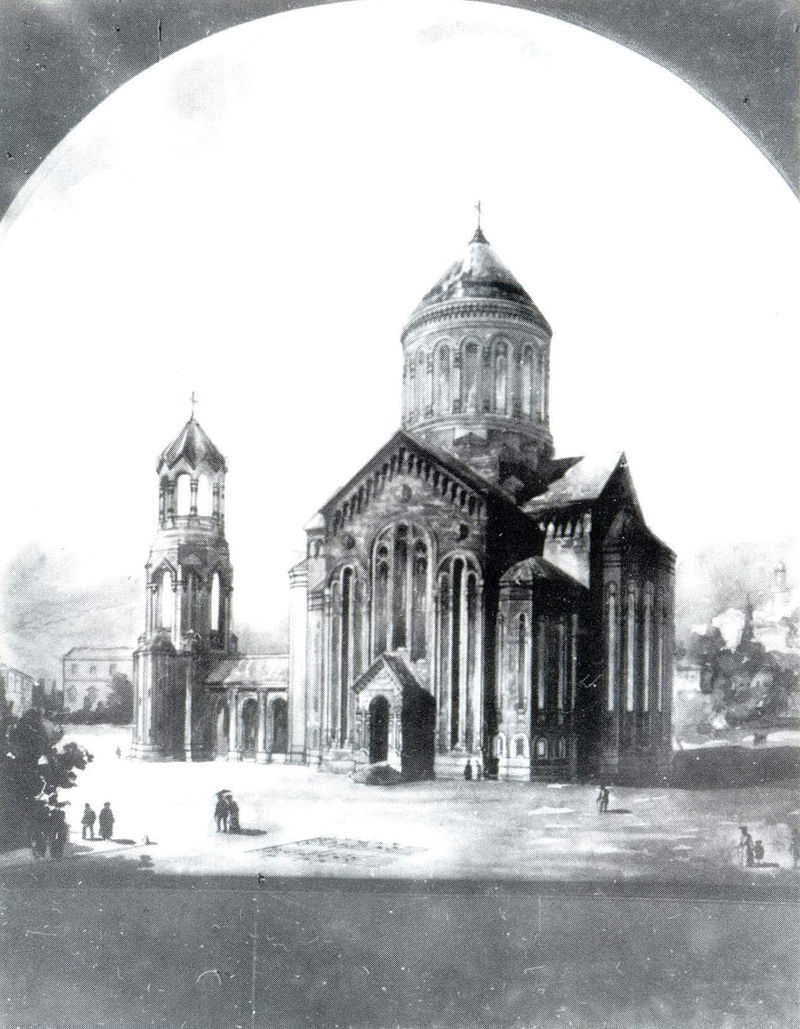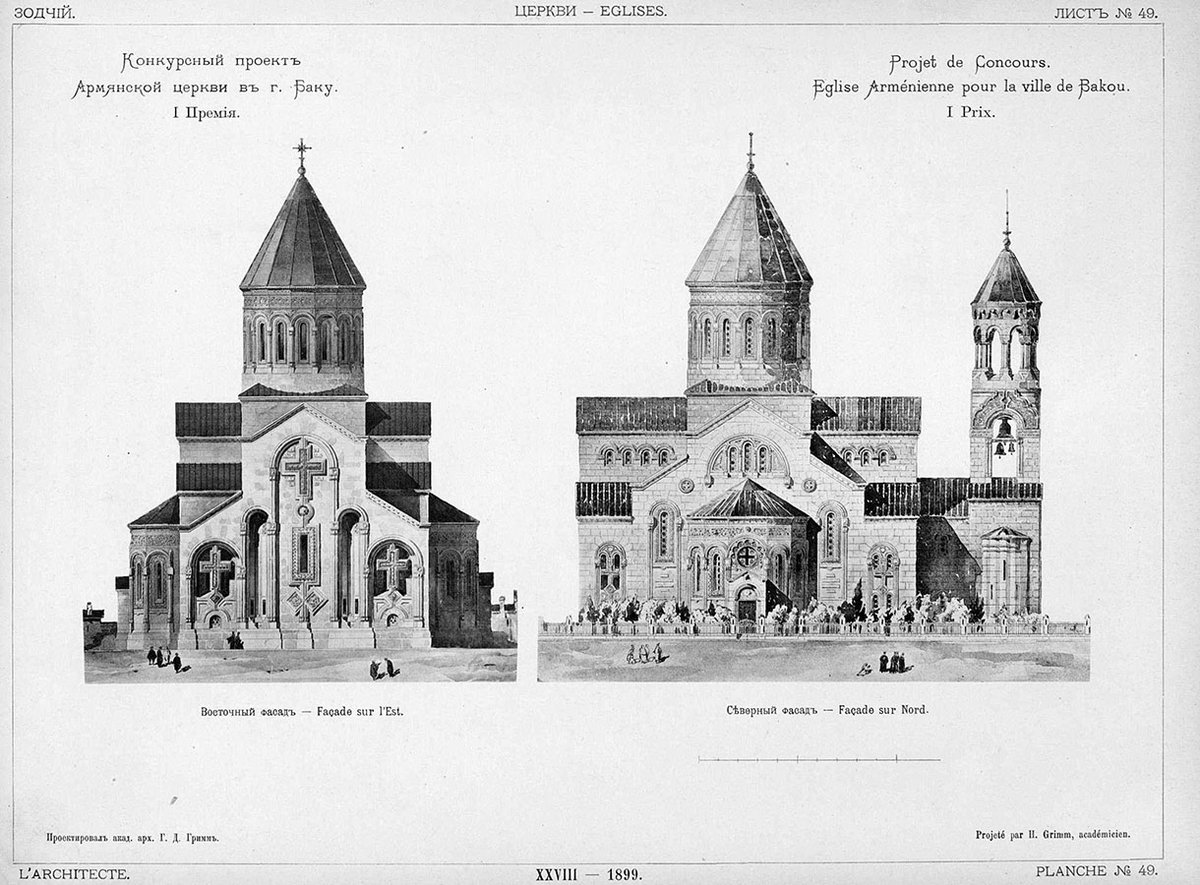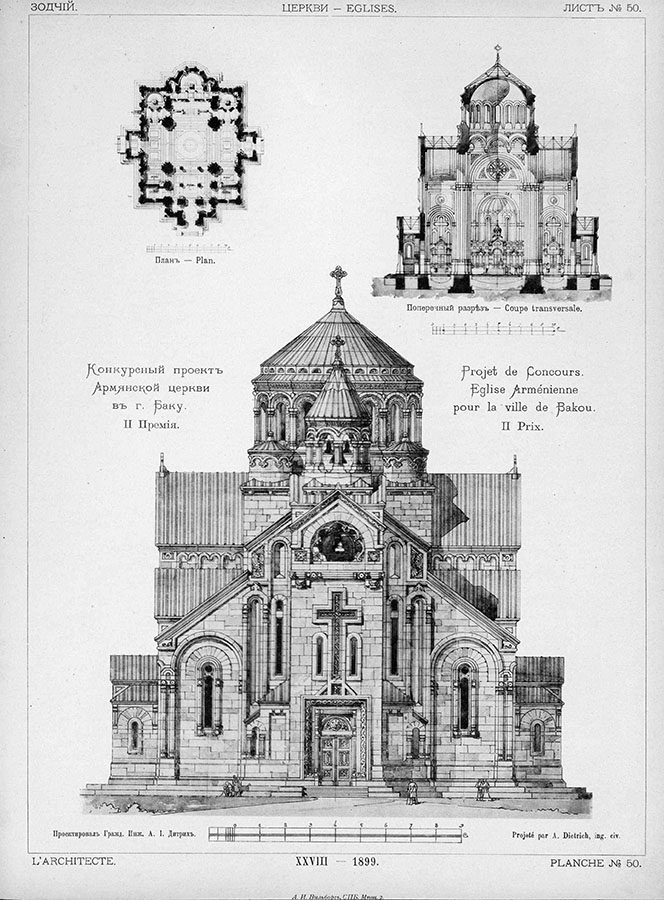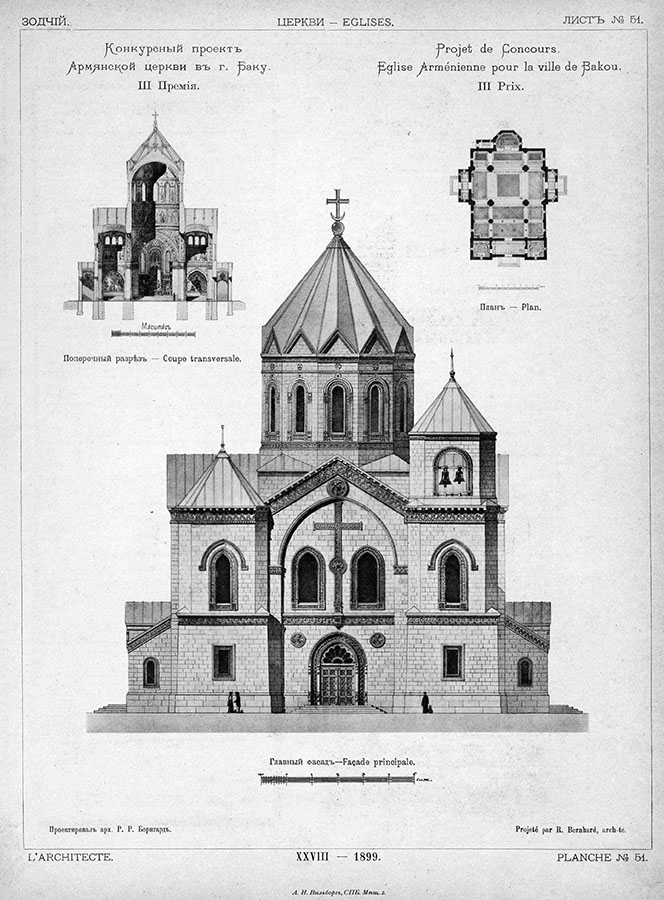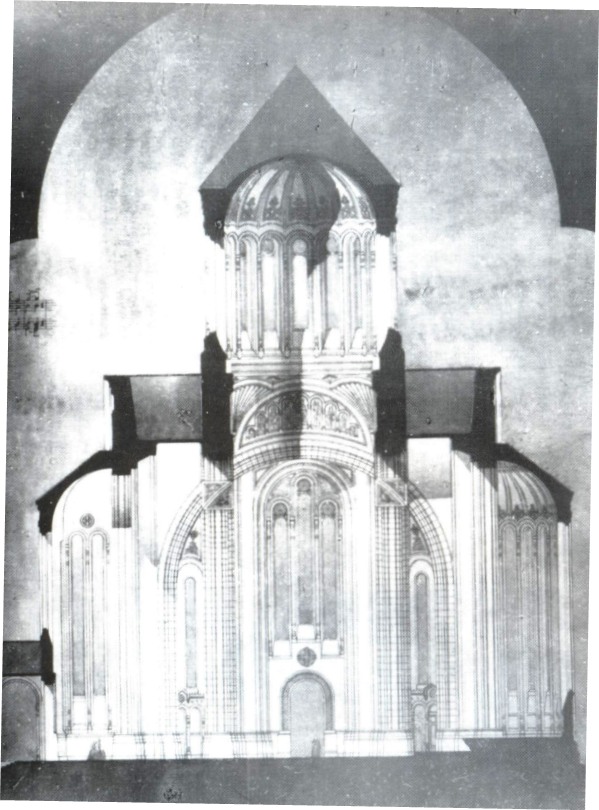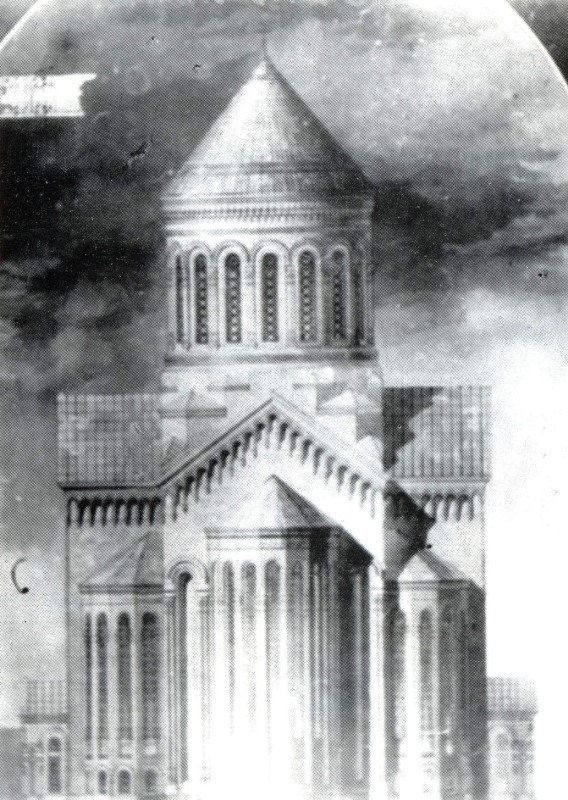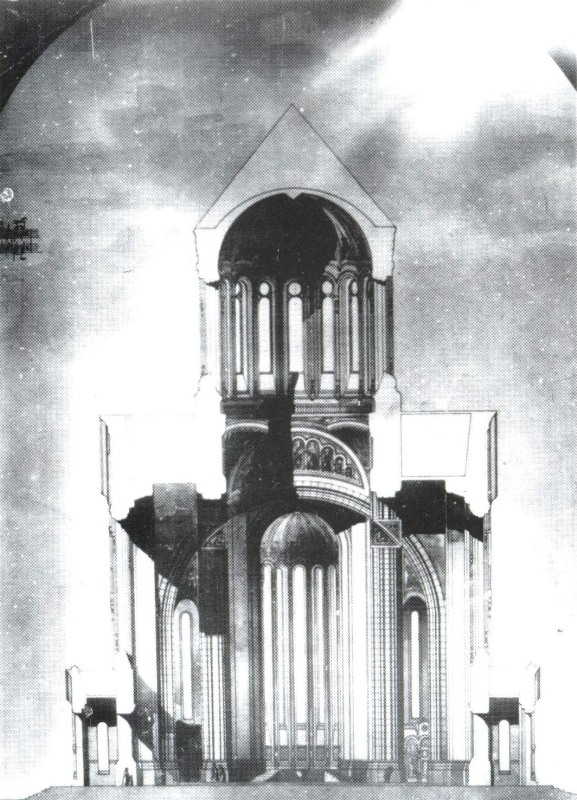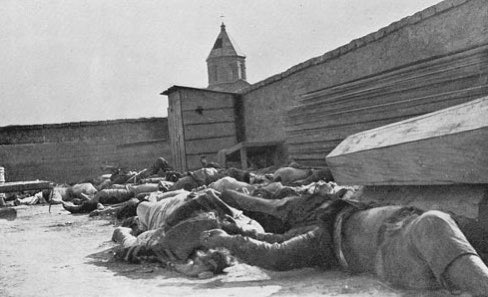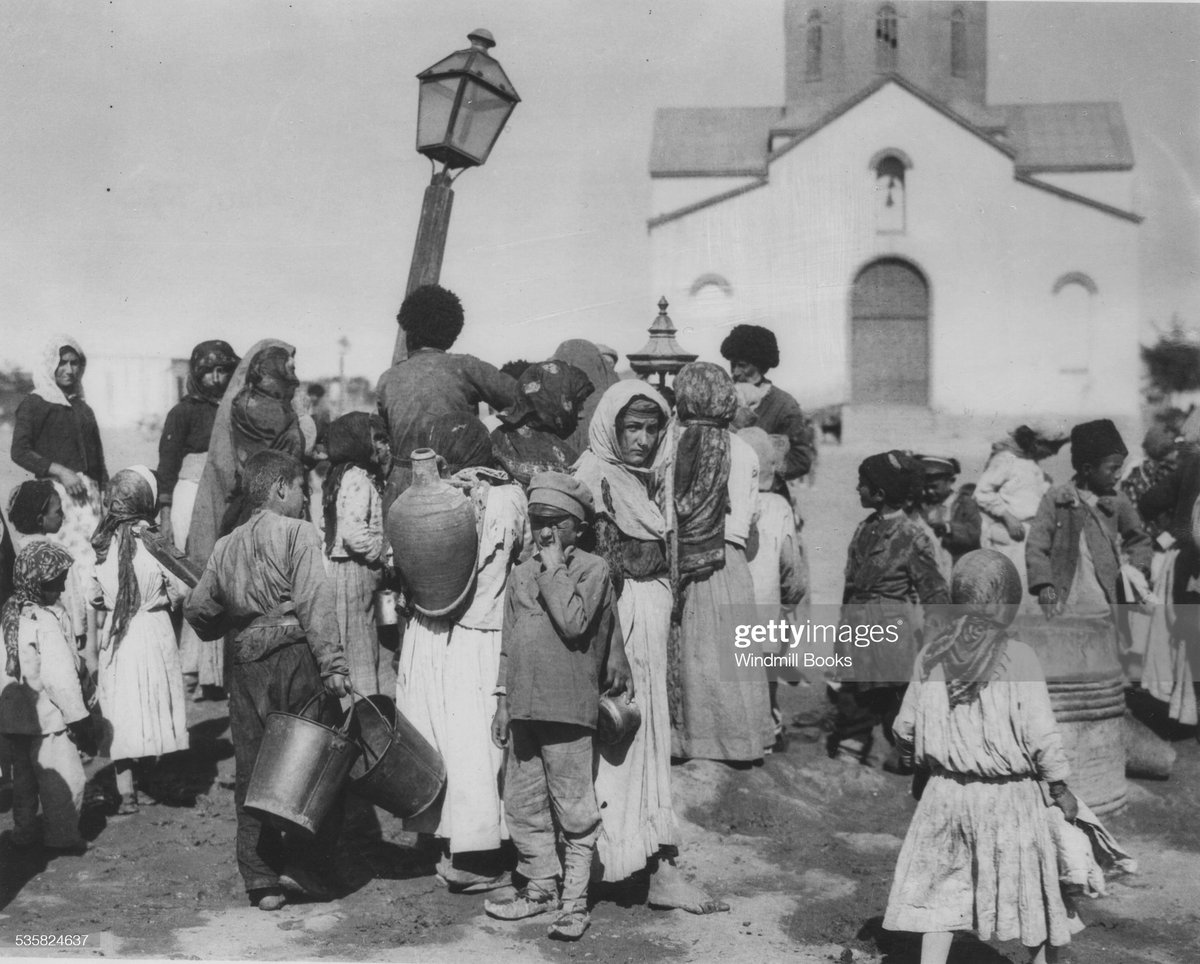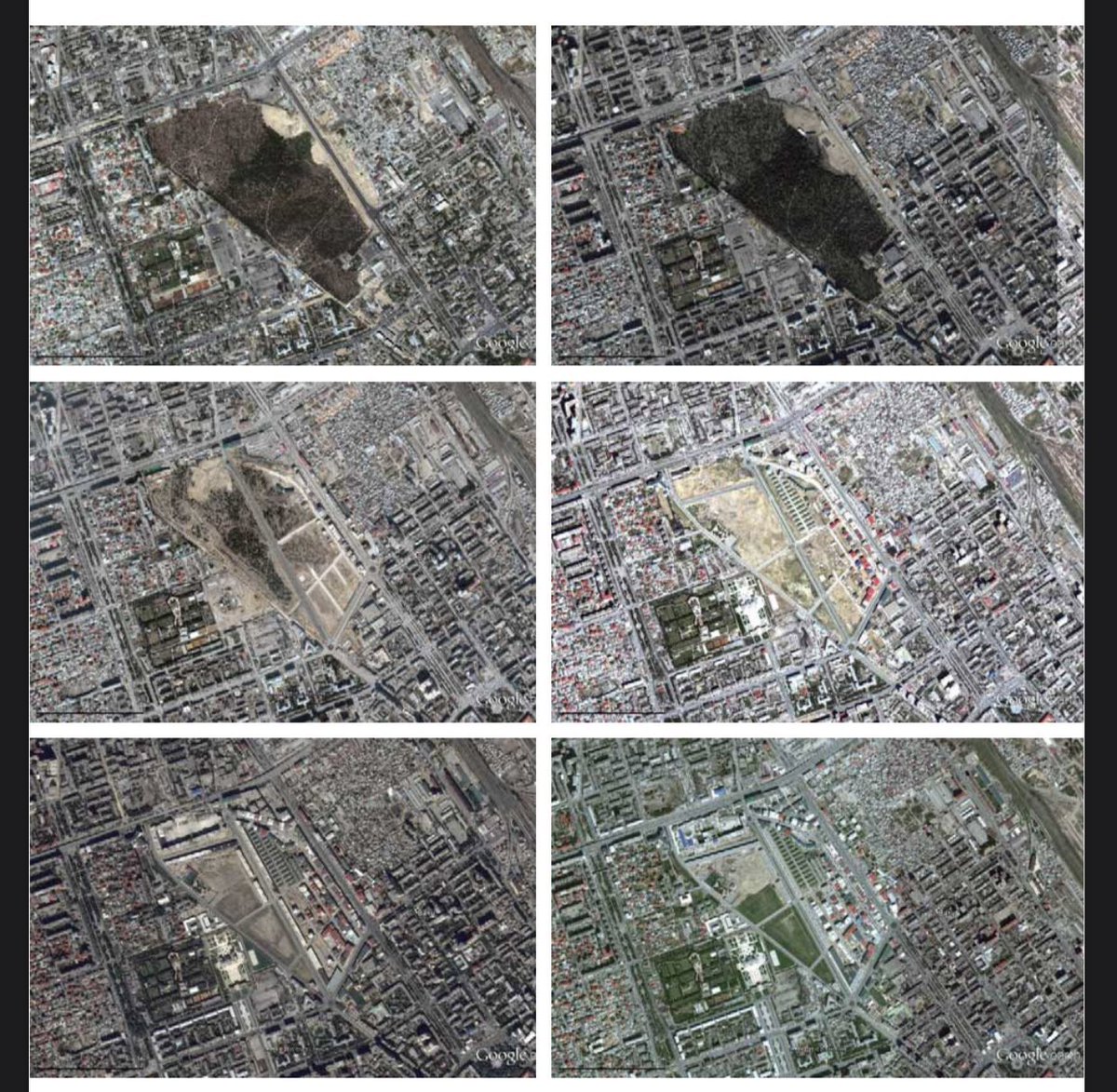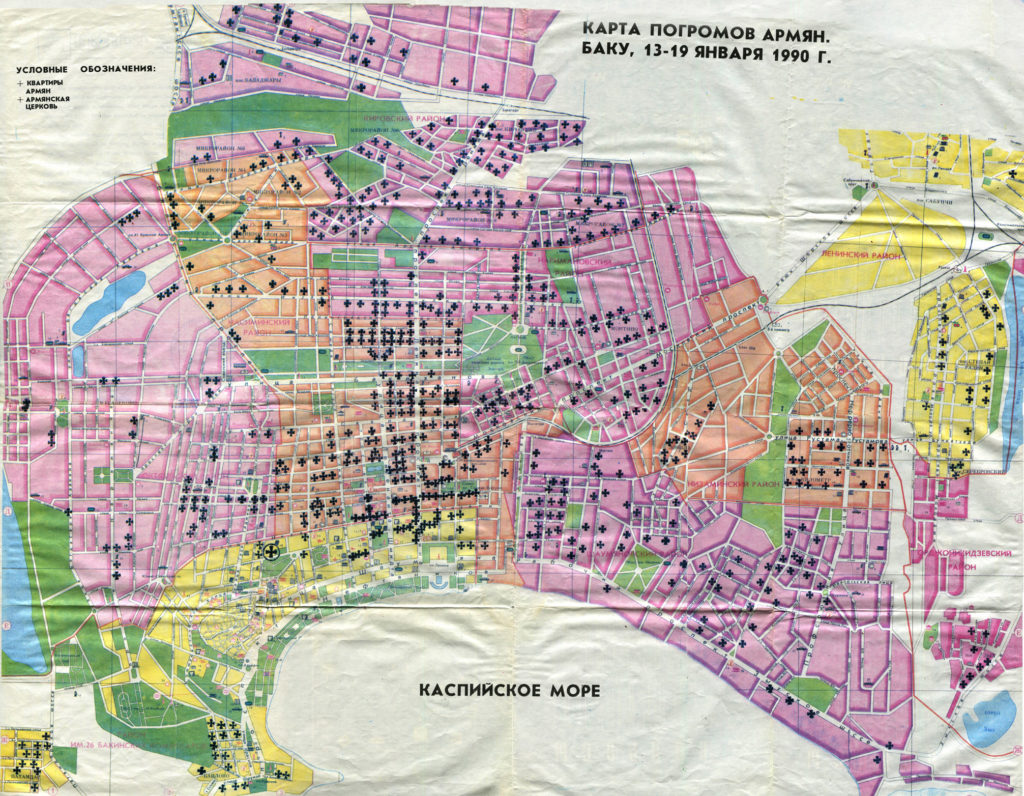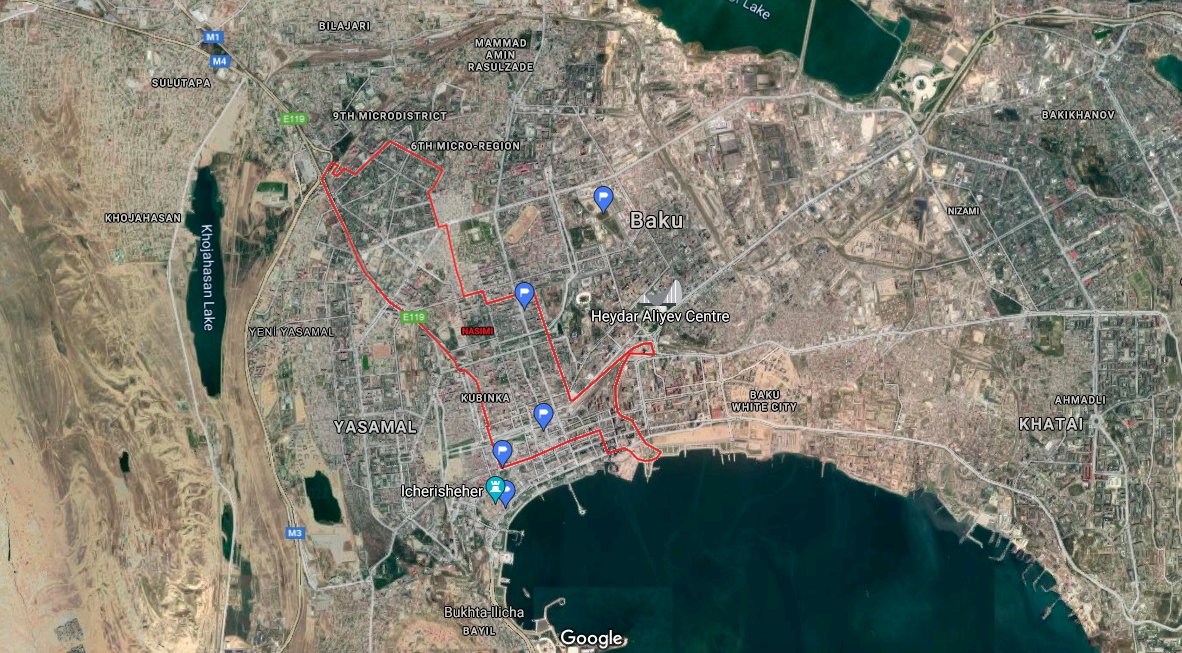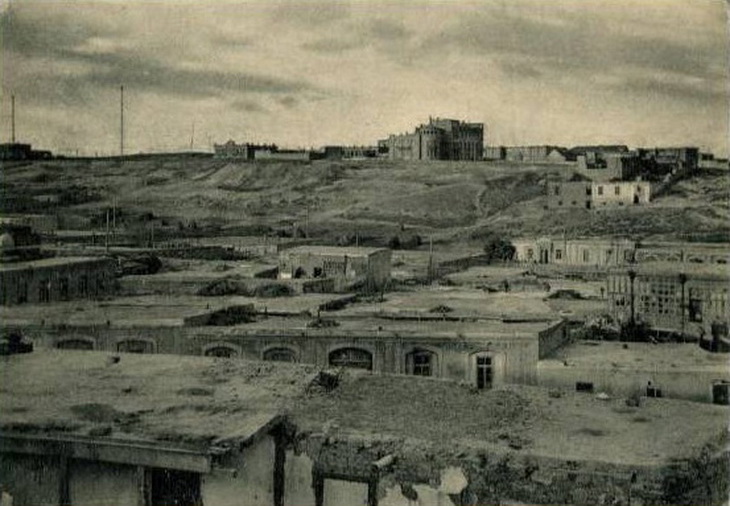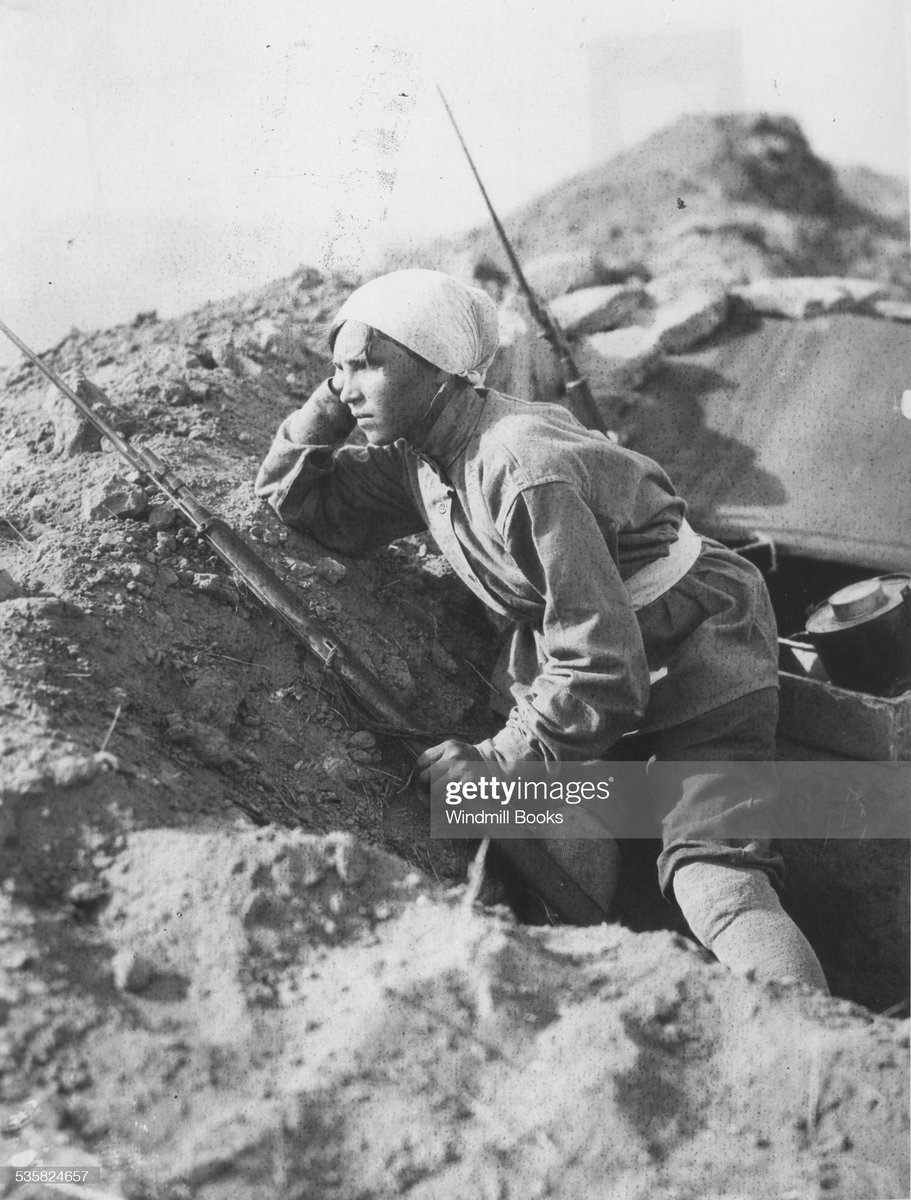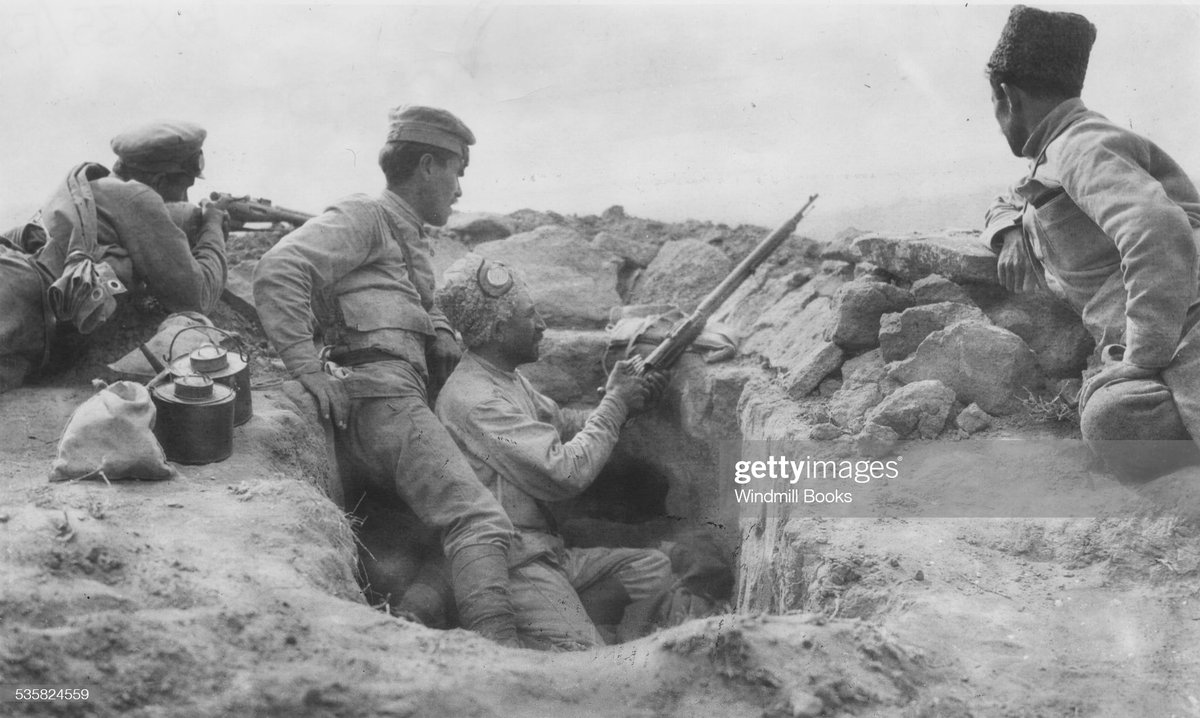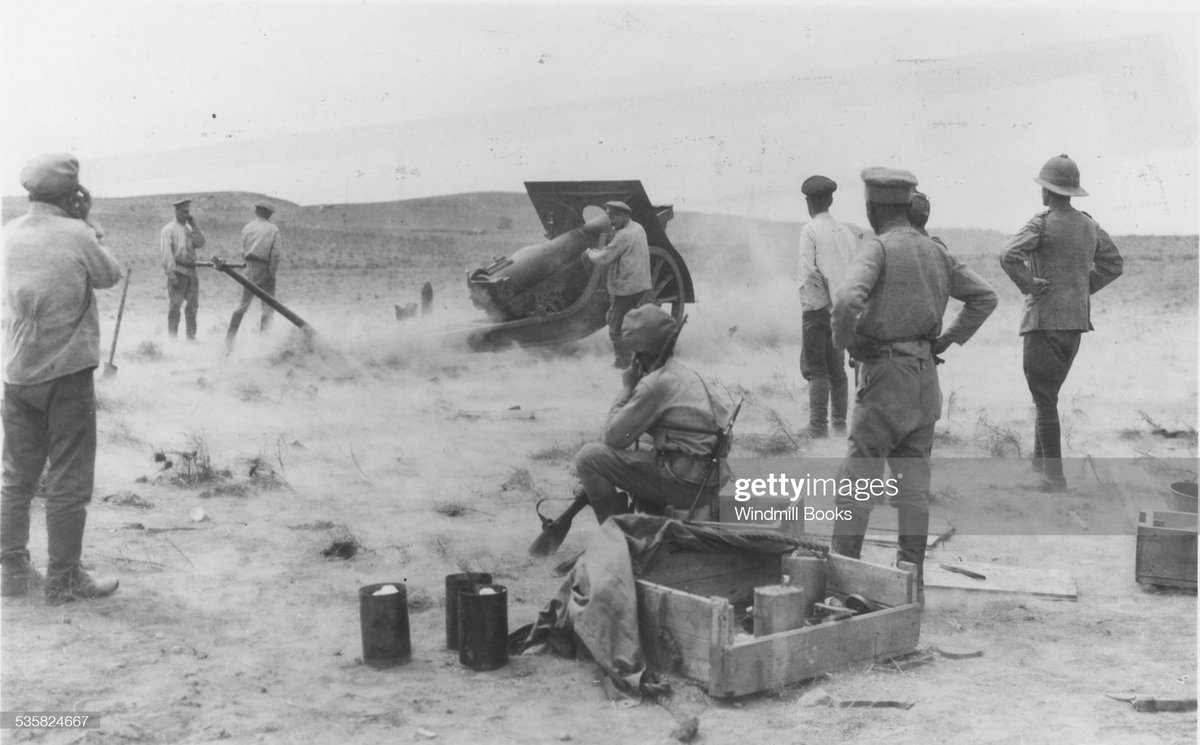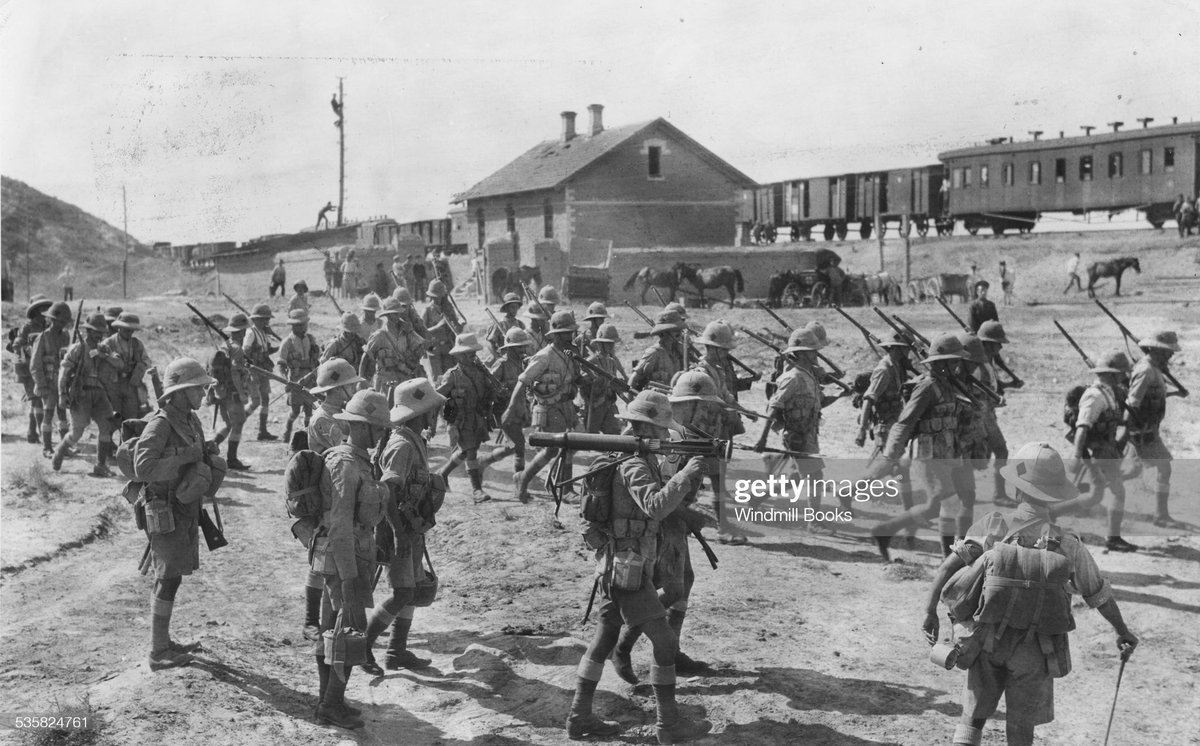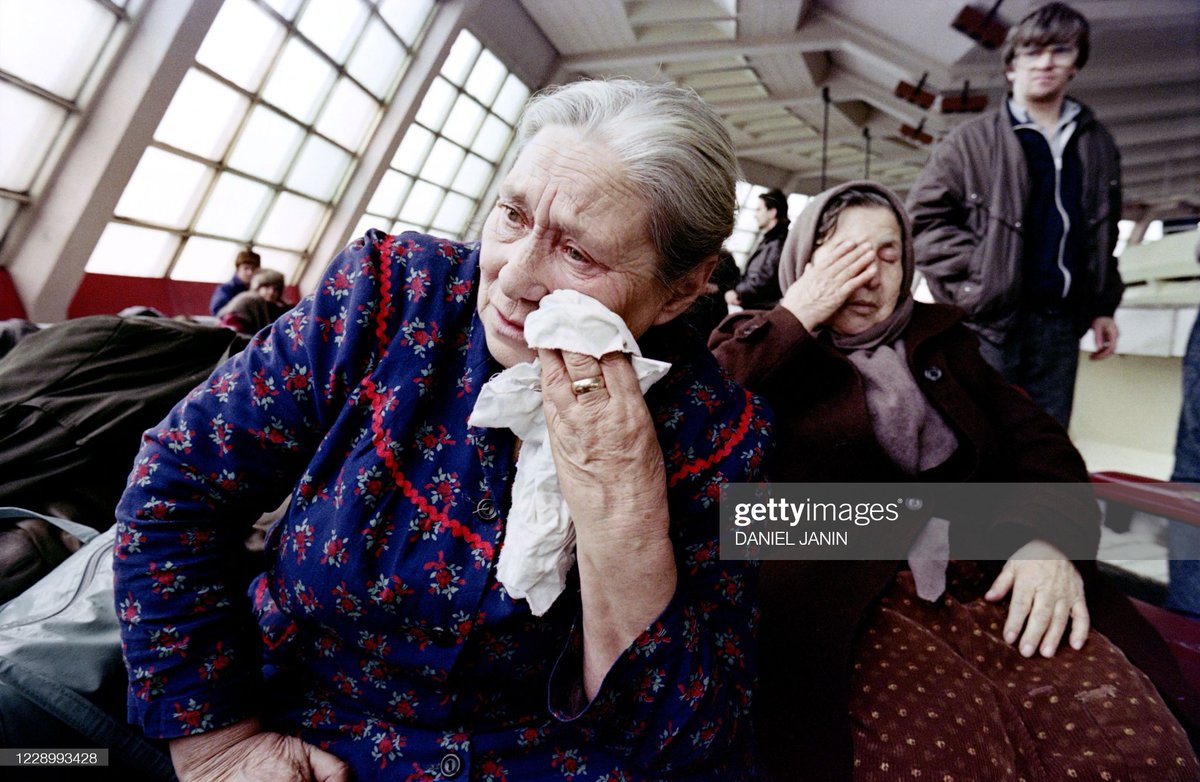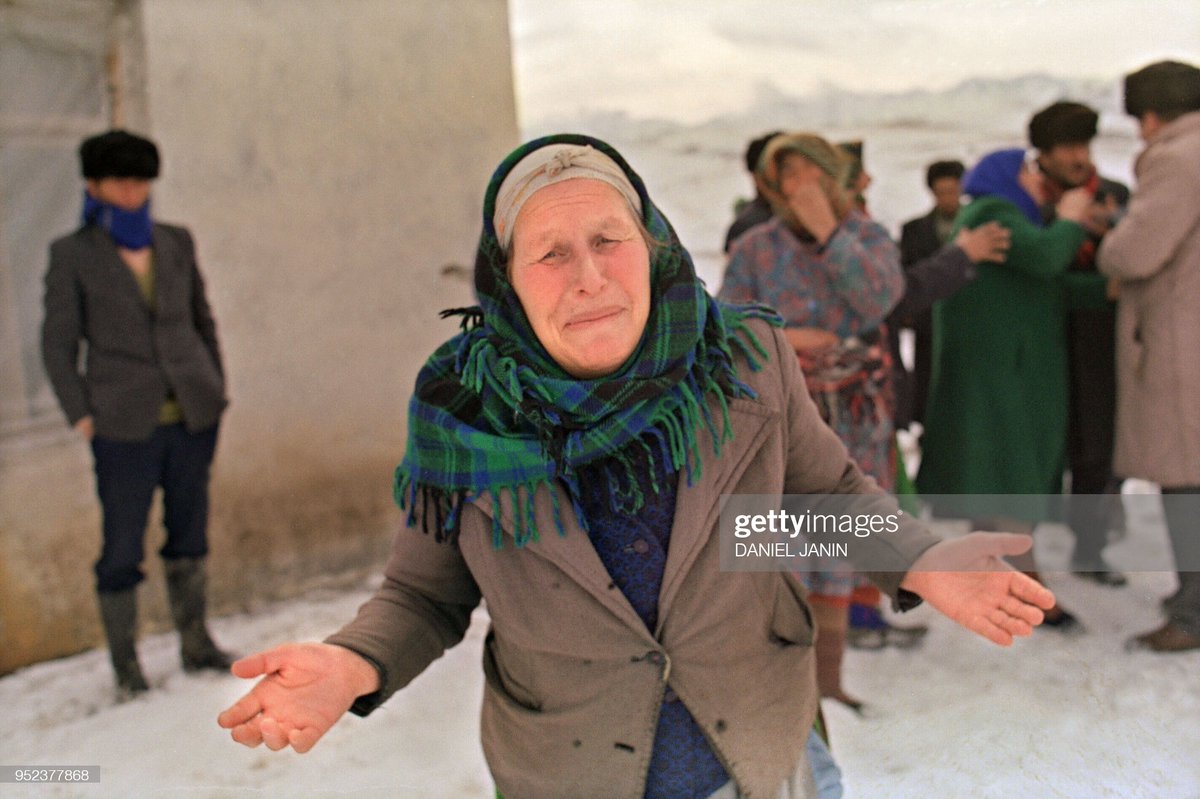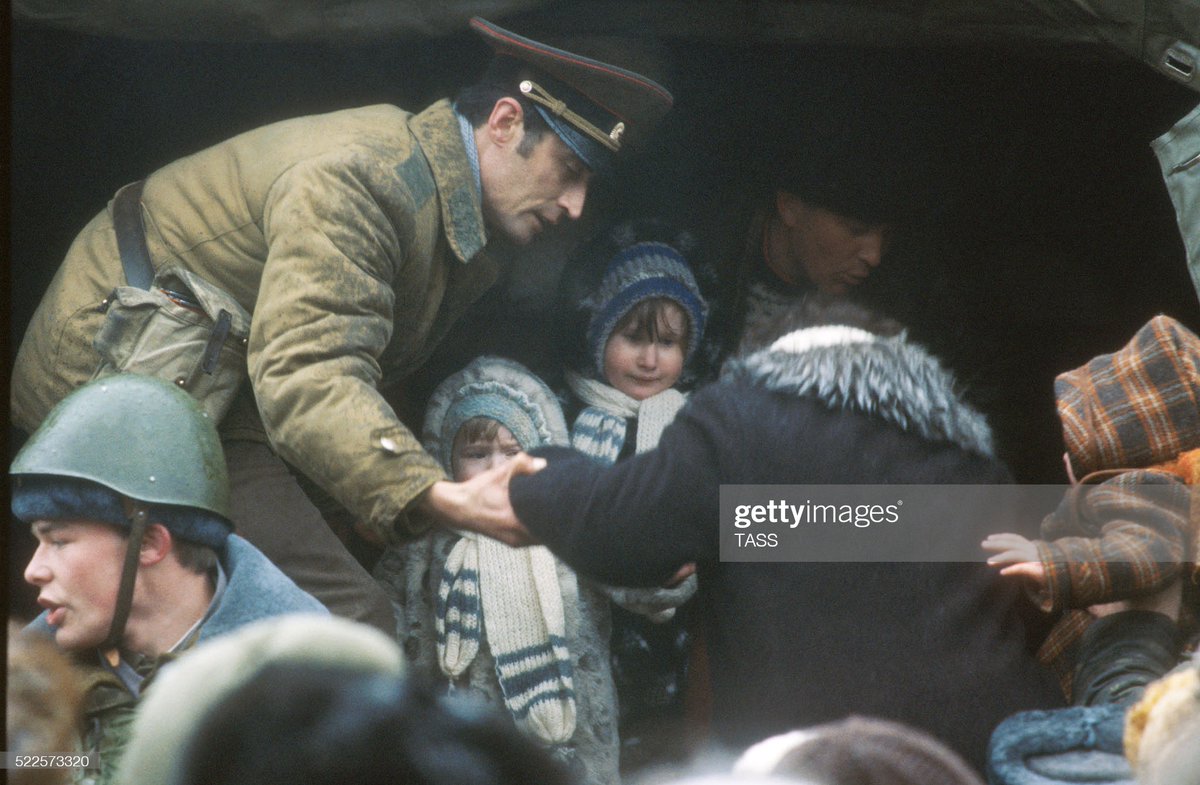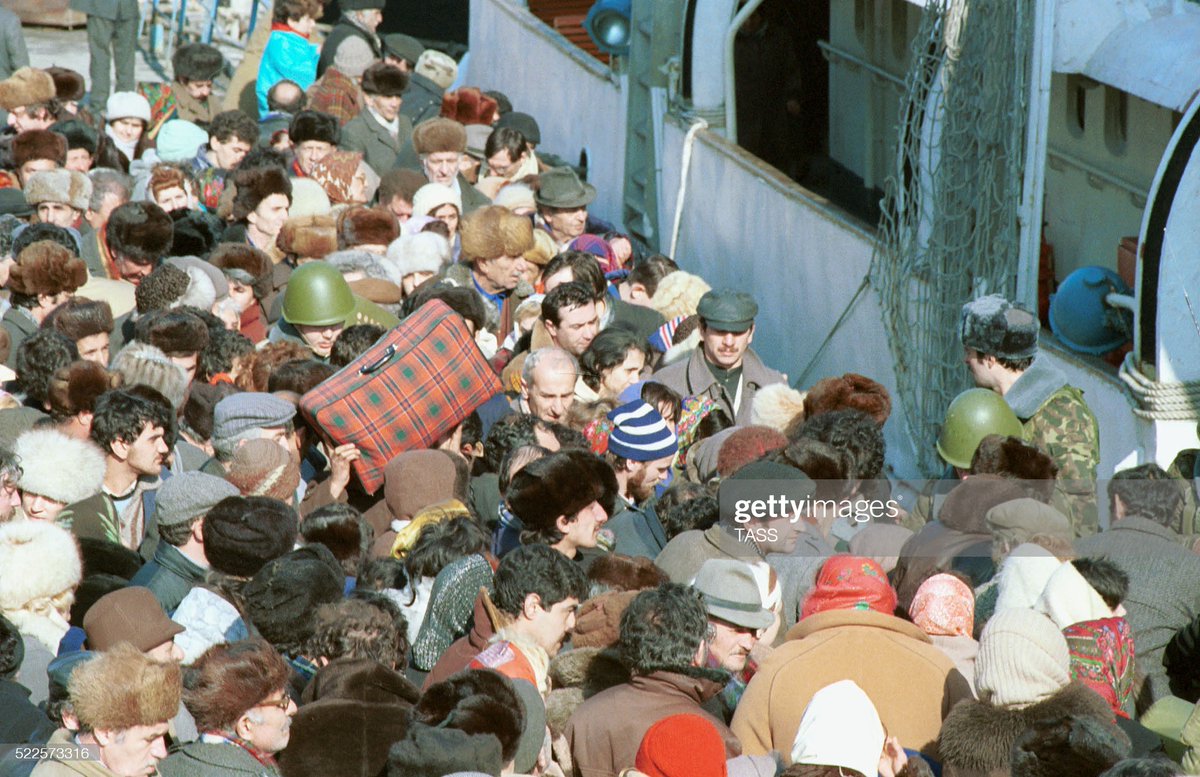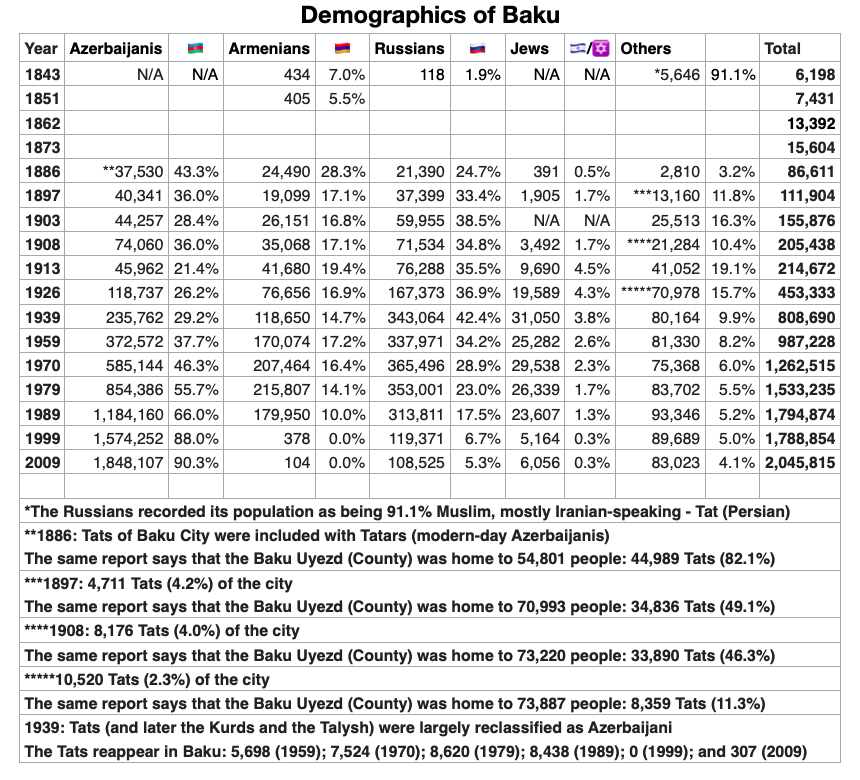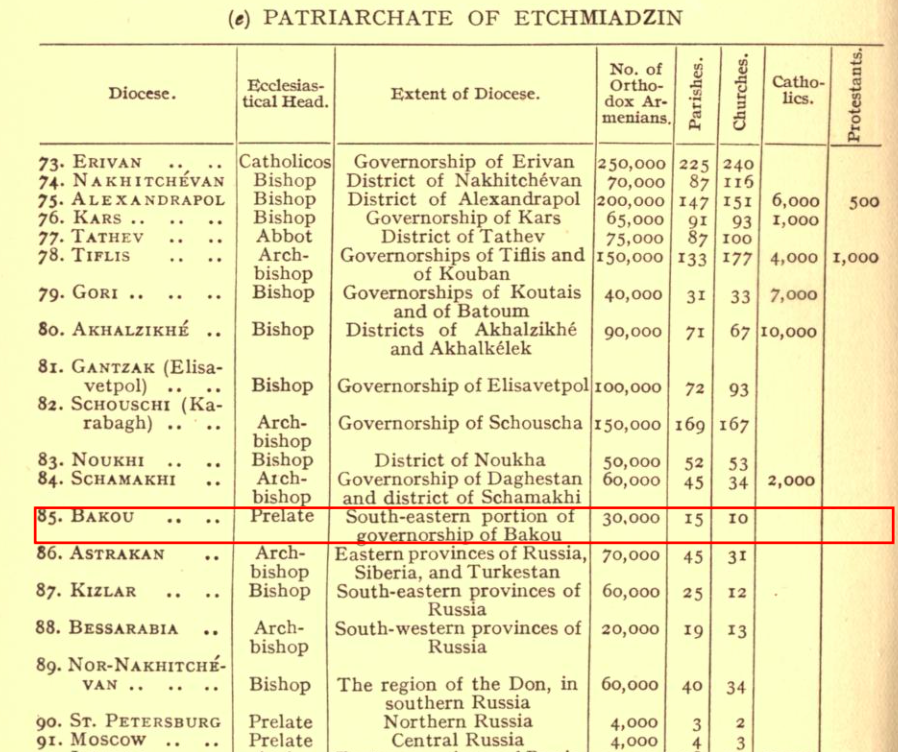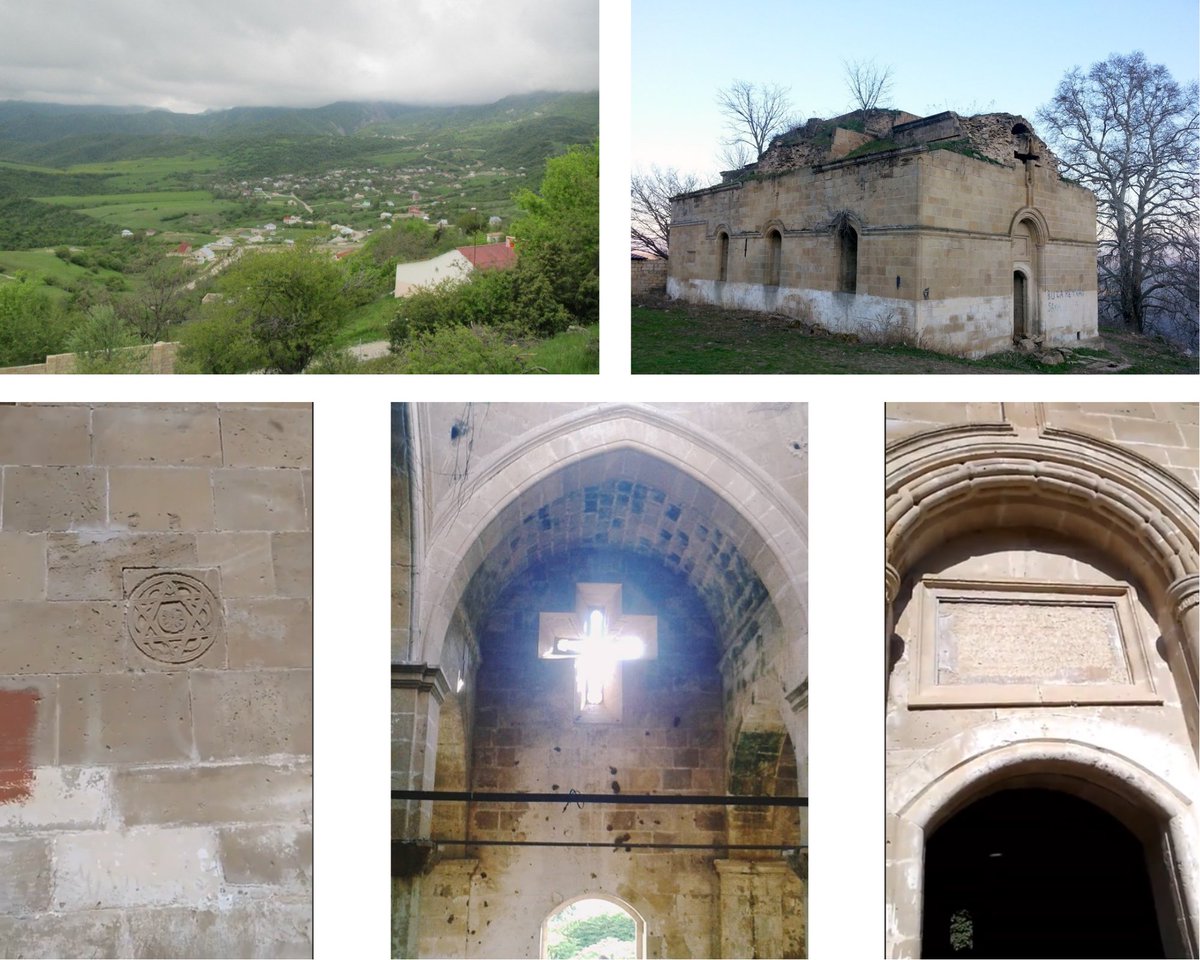#Armenian Churches of #Baku
Labeled as red dots (south to north)
1) Holy Mother of God in the Inner City (Icheri Shehir)
2) Saint Gregory the Illuminator
3) Saints Thaddeus & Bartholomew
4) Holy Resurrection Chapel in the cemetery
5) Holy Translators in Haykashen (Ermenikend)
Labeled as red dots (south to north)
1) Holy Mother of God in the Inner City (Icheri Shehir)
2) Saint Gregory the Illuminator
3) Saints Thaddeus & Bartholomew
4) Holy Resurrection Chapel in the cemetery
5) Holy Translators in Haykashen (Ermenikend)
The Church of the Holy Mother of God was located in Baku& #39;s Walled City (Icheri Shehir). It was built in 1797-1799, although a church has been mentioned here as early as the 13th century in Armenian and Persian sources. It was destroyed in 1992 and a cafe stands in its place.
You can see the #Armenian Church of the Holy Mother of God again here in the late 19th and early 20th centuries, standing next to #Baku& #39;s infamous #MaidenTower.
Here are some pictures of #Baku& #39;s #Armenian Church of the Holy Mother of God during the late soviet era.
In 1992 during the #NagornoKarabakh War the church was largely destroyed and its 3 level bell-tower was converted into what the #Azerbaijani government claimed was a "fire temple." Later a cafe was opened in a green space where the church& #39;s prayer hall once stood.
The Church of Saint Gregory the Illuminator became the main church of #Baku& #39;s #Armenians. It was designed by a German architect, Karl Gustav Hippius, and built in 1863-1869. Its located on the norther edge of Baku& #39;s famous Fountains Square. Seen here under construction in 1865.
The Church of Saint Gregory was at the center of #Armenian life in #Baku for over a century as seen in the pictures below. It was a prominent structure in the early city.
The Church is the sole remaining Armenian monument in Baku. Its been shut down since the 1990 #BakuPogrom when 128 local Armenians were murdered and 700 were wounded. The city& #39;s 215,000 Armenians essentially disappeared following this violent massacre and expulsion.
Adjacent to the church was a library founded in 1870 by the Armenian Philanthropic Society of Baku (est. 1864). It was illegally confiscated, had its crosses removed from the domes, and converted into the "Azerbaijani Presidential Library" in 2002.
The church itself was set on fire in February 1905 (seen in the picture), September 1918, December 1989, and January 1990. Its frescos were whitewashed (seen in picture 2) and the 5,000 Armenian books of the library were moved into the church& #39;s prayer hall (seen in pictures 3-4).
The #Armenian Cathedral of Saints Thaddeus & Bartholomew in #Baku (also known as Budagovski Cathedral) was built in 1907-1910. It was designed by Hovhannes Kajaznuni. It was consecrated in 1911 as the Cathedral of the Baku Diocese home to 30,000 parishioners and 10 churches.
Here are final sketches of the design of the Cathedral. Its prayer hall was able to accommodate 1,500 parishioners.
The Cathedral was blown up in 1930 by Soviet authorities and replaced with the Uzeyir Hajibeyov Baku Academy of Music (formerly the Uzeyir Hajibeyov Azerbaijan State Conservatoire).
The Holy Resurrection Chapel in the Armenian Cemetery of Baku was built in 1894-1895. No definite date on its destruction.
1) Armenian bodies during the February 1905 massacre
2) Armenians refugees during the September 1918 massacre
3-4) The destruction of the cemetery in 2013
1) Armenian bodies during the February 1905 massacre
2) Armenians refugees during the September 1918 massacre
3-4) The destruction of the cemetery in 2013
The 5th #Armenian Church in #Baku was the Church of the Holy Translators. It was destroyed in 1925. It was located in Haykashen (Ermənikənd | Арменикенд) where Armenians settled after the 1905 massacre, they were expelled in 1990. It corresponds to the Nəsimi rayonu of Baku.
The Armenian population of Baku was 88,673 in 1918 as Ottoman troops (aided by the Azerbaijani government) advanced towards the city. The Turkish /Azerbaijani armies entered Baku in September 1918. 31,543 Armenians fled, sailing across the Caspian, while 29,063 were slaughtered.
Some (less violent/gruesome) scenes from January 1990 during the #BakuPogrom that resulted in Baku& #39;s nearly quarter of a million strong population being forcibly expelled from the city. I earlier had mentioned how 128 ethnic Armenians died in early 1990 during the violent riots.
I worked on compiling the demographic history of Baku and included the four largest ethnic groups, here is that:
Off topic: this report published by the Armenian Church in 1911 in Constantinople (in English in 1953 in London) says that the Armenian Prelacy of Baku had 15 parishes, 10 churches, and 30,000 members, it was subordinate to the Diocese of Shamakhi which dated to the 15th century.
From 1660-1838 the Diocese of Shamakhi (Şamaxı) was centered at the Surb Stepanos (Saint Stephen) Monastery in Saghyan (Saqiyan). The Armenian population was expelled in 1988 and the village was renamed Günəşli in 2020 to sound more "Azerbaijani."
In 1838 the headquarters of the Diocese of Shamakhi were moved to the Monastery at Meysari (Meysəri). The headquarters were moved to the St. Gregory Church in Baku in 1918 as the Ottoman army swept across Azerbaijan. The monastery was blown up by the Soviets in the 1970s.
I& #39;ll end the tweet with this video from April 19, 1987. This was the last Easter celebration held at the St. Gregory Armenian Church in #Baku. https://youtu.be/wrDE-mEwdt4 ">https://youtu.be/wrDE-mEwd...

 Read on Twitter
Read on Twitter